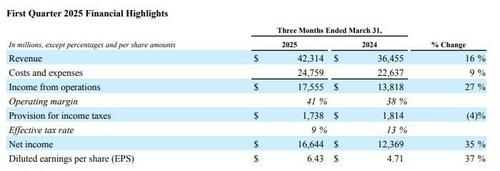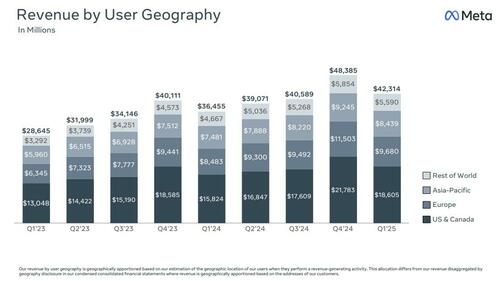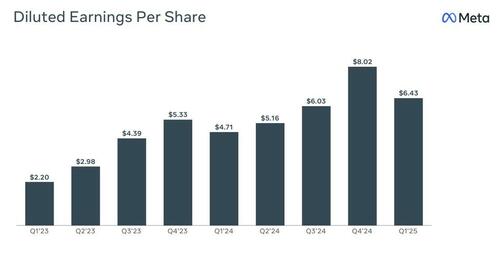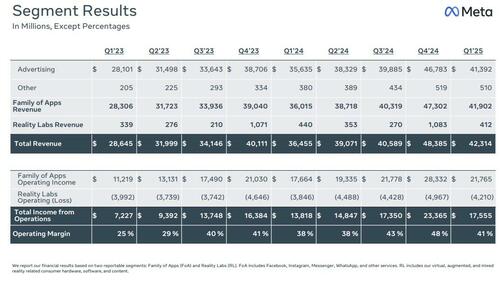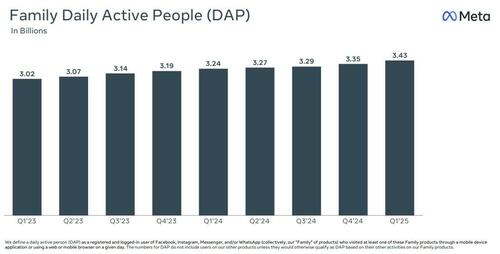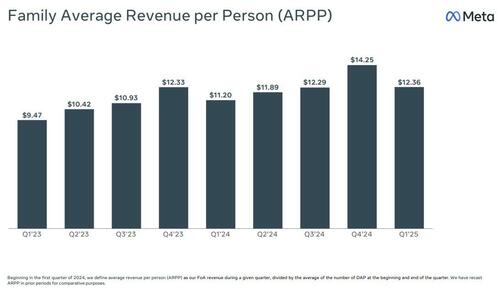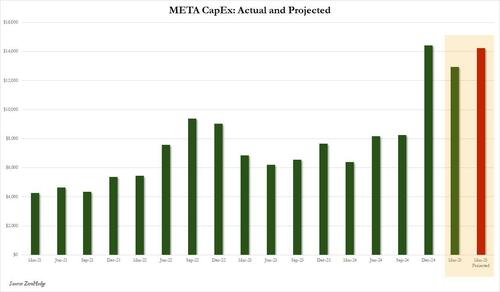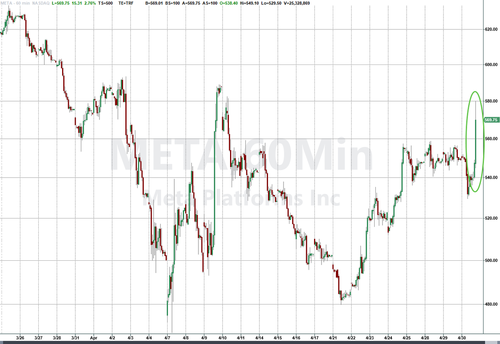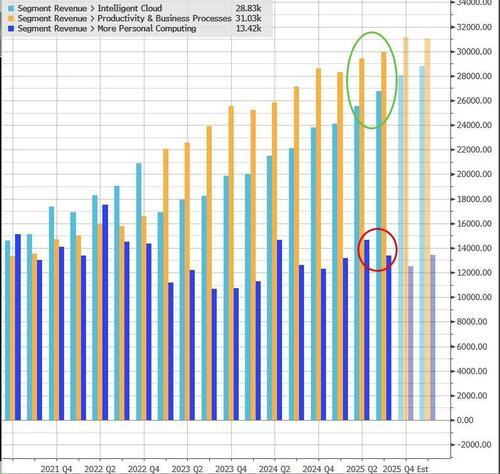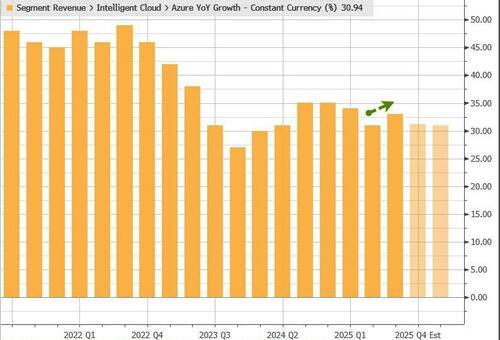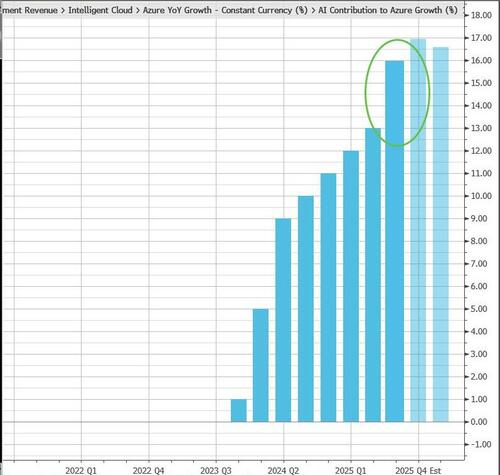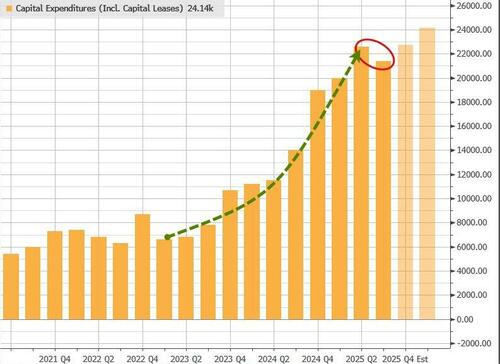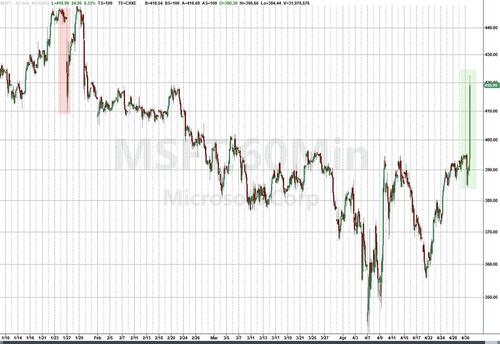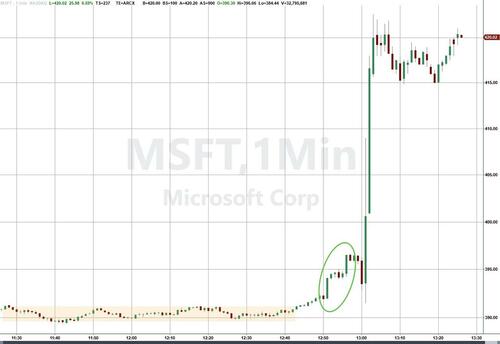It is sad that there are what you might call professional Catholics who make a living on their Catholicism, but in whom the spring of faith flows only faintly, in a few scattered drops. We must really make an effort to change this.
Distinction Matter - Subscribed Feeds
-
Site: Mises InstituteA former toadie to Dick Cheney, sources say Waltz will soon be fired from his job as Trump's National Security Adviser.
-
Site: AsiaNews.itHighly appreciated by Benedict XVI, the archbishop of Sri Lanka's capital has held several posts in the Vatican, including that of secretary of the Dicastery for the liturgy. In recent years, he has accompanied the travails of his country, tirelessly asking for justice for the victims of the Easter 2019 massacres.
-
Site: Real Investment Advice
When your wealth grows, so does the complexity of your financial life. For high-net-worth individuals, tax planning is no longer just about filing accurately—it’s about strategically managing income, investments, and legacy plans to reduce taxable income and preserve wealth over the long term.
From investment strategies and estate planning to charitable giving and tax-advantaged accounts, smart tax planning can make a significant difference in how much of your wealth stays with you and your heirs. This comprehensive guide explores advanced tax strategies tailored specifically for high-net-worth individuals.
Leveraging Tax-Deferred Accounts
One of the most effective and foundational strategies in tax planning for high-net-worth individuals is the use of tax-deferred accounts. These accounts allow your investments to grow without being taxed each year, offering significant compounding advantages over time. More importantly, they help reduce your current taxable income—a critical factor for individuals in higher tax brackets.
Traditional IRAs and 401(k)s
For salaried professionals and business owners alike, Traditional IRAs and 401(k)s remain valuable tools. Contributions to these accounts are typically made on a pre-tax basis, meaning they reduce your taxable income in the year of the contribution. Over time, the funds grow tax-deferred until withdrawals begin in retirement, when many individuals are in a lower tax bracket. This deferral not only enhances portfolio growth but also provides a strategic timing advantage for tax liability.
SEP IRAs and Solo 401(k)s
For high-net-worth individuals who are self-employed or own small businesses, SEP IRAs (Simplified Employee Pension IRAs) and Solo 401(k)s provide greater contribution flexibility than traditional plans. In 2024, business owners can contribute up to 25% of their compensation or $66,000 (whichever is less) to a SEP IRA. Solo 401(k)s offer the opportunity to contribute both as an employer and an employee, allowing for even greater annual deferrals. These plans are ideal for those with fluctuating income who want to maximize tax advantages during peak earning years.
Defined Benefit Plans
Defined Benefit Plans—also known as pension plans—are less commonly used today but can be highly beneficial for high earners, particularly those in their 50s or 60s who are looking to accelerate retirement savings. These plans allow significantly higher contributions than other retirement plans (sometimes well over $100,000 annually), and the contributions are tax-deductible. This makes them especially appealing for business owners seeking to reduce current income taxes while creating a predictable, fixed income stream in retirement.
By contributing aggressively to these tax-deferred vehicles, high-net-worth individuals can reduce their taxable income during their highest earning years, defer taxes until retirement, and capitalize on compound growth. These strategies also create opportunities for future tax planning, such as Roth conversions during lower-income years or strategic withdrawal planning in retirement to manage required minimum distributions (RMDs).
When integrated into a comprehensive financial plan, tax-deferred accounts become a cornerstone of long-term wealth preservation and tax efficiency.
Roth Conversions for Strategic Tax Diversification
Although Roth IRAs are funded with after-tax dollars, they offer tax-free withdrawals in retirement. A well-timed Roth conversion—moving assets from a traditional IRA to a Roth IRA—can be a powerful tool in years when your income is temporarily lower.
This strategy requires paying taxes on the converted amount now but can minimize future required minimum distributions (RMDs) and lower taxable income in retirement.
Reducing Capital Gains Taxes
Capital gains taxes are a major concern for wealthy investors. Several strategies can help reduce or defer these taxes:
- Tax-loss harvesting: Offset gains by selling underperforming investments.
- Qualified Opportunity Zones: Defer and potentially eliminate capital gains by investing in designated areas.
- Donor-Advised Funds: Donate appreciated assets, avoiding the capital gains tax and receiving a charitable deduction.
Long-term capital gains are taxed at a lower rate than ordinary income, so holding investments for more than a year is another key strategy.
Charitable Giving for Tax Efficiency
Charitable contributions provide more than just philanthropic satisfaction—they offer valuable tax advantages. Consider these methods:
- Donor-Advised Funds (DAFs): Contribute appreciated assets, take a deduction immediately, and distribute funds to charities over time.
- Qualified Charitable Distributions (QCDs): For those over 70½, you can donate up to $100,000 annually directly from an IRA, satisfying RMDs and avoiding income tax.
- Charitable Remainder Trusts (CRTs): These trusts provide income to beneficiaries for a set term, with remaining assets going to charity—delivering both tax benefits and legacy impact.
Trusts and Estate Planning Strategies
High-net-worth individuals must plan carefully for the transfer of wealth. Trusts are essential tools for reducing estate taxes and protecting assets. Common strategies include:
- Irrevocable Life Insurance Trusts (ILITs): Exclude life insurance proceeds from your estate.
- Grantor Retained Annuity Trusts (GRATs): Transfer assets with minimal gift tax implications while retaining an income stream.
- Spousal Lifetime Access Trusts (SLATs): Provide income access while removing assets from the estate.
These tools help manage generational wealth transfer, reduce estate tax liability, and ensure your assets are distributed according to your wishes.
Tax-Efficient Investments
How you invest is just as important as what you invest in. Tax-efficient investments can significantly reduce your tax burden:
- Municipal Bonds: Generate federally tax-free income and, in some cases, are exempt from state taxes.
- Tax-Managed Mutual Funds: Designed to limit capital gains distributions.
- Exchange-Traded Funds (ETFs): Generally more tax-efficient than mutual funds due to their structure.
Strategically placing tax-inefficient investments in tax-advantaged accounts and keeping tax-efficient investments in taxable accounts is known as asset location—an advanced method for reducing taxes over time.
Business Tax Strategies
For business owners, there are additional tax-saving opportunities:
- Pass-Through Entity Deductions: If applicable, Section 199A allows for a 20% deduction on qualified business income.
- S-Corporation Elections: Reduce self-employment tax by splitting salary and distributions.
- Family Employment: Hiring children in the business can shift income to a lower tax bracket.
Working closely with a tax advisor ensures compliance while maximizing deductions and credits available to business owners.
Staying Ahead of Tax Law Changes
Tax laws evolve regularly, and high-net-worth individuals must stay informed to adapt strategies accordingly. Key issues to watch include:
- Changes to estate and gift tax exemptions
- Adjustments to capital gains tax rates
- Proposed legislation affecting retirement accounts and trust rules
Partnering with a financial advisor and CPA allows you to stay proactive and avoid costly surprises.
Ready to Reduce Your Tax Burden and Preserve Wealth?
At RIA Advisors, we specialize in tax planning for high-net-worth individuals. Our team helps you implement custom strategies to reduce taxable income, optimize investments, and protect your legacy. Contact us today to schedule your private consultation and take control of your financial future.
FAQs
What is the best way to reduce taxable income as a high-net-worth individual?
Strategies include maximizing tax-deferred account contributions, leveraging charitable giving, and using tax-efficient investments.
Are Roth conversions worth it for high earners?
Yes—especially in years with lower income or when aiming to reduce future RMDs and taxes in retirement.
How can trusts help with estate tax planning?
Trusts can remove assets from your taxable estate, provide income to beneficiaries, and ensure a smooth asset transfer.
What are tax-managed funds?
These are mutual funds specifically designed to minimize capital gains distributions, making them more tax-efficient for investors.
How do I know if I need advanced tax planning?
If you have a high income, complex assets, or are planning a large legacy, advanced tax planning is essential to preserve wealth.
The post A Comprehensive Guide to Tax Planning for High-Net-Worth Individuals appeared first on RIA.
-
Site: Real Investment Advice
The headlines below lead some to believe the shelves in our stores will soon be empty. Moreover, reminiscent of 2020, an inflation spike due to fractured supply lines is imminent. Let's provide context to help make sense of the headlines and determine whether the plunge of Chinese inbound container ships to US ports represents truth or easy narratives.
- China Freight Ship Traffic To Busiest US Ports Sees Steep Drop – CNBC
- Chief economist warns of collapse after free fall in container traffic to the US -Shipping Watch.
- Traffic At The Port of Los Angeles Set To Plunge- LA Times
- Plunging LA Port Volumes Spell Trouble For Truckers- FreightWaves
As shown on the left, the plunge in traffic of recently departed container ships from Chinese ports is startling. However, it only reverses the surge to US ports in the month prior. As previously noted, companies were stockpiling goods to avoid tariffs. Thus, with inventories higher than usual, importers' needs fell in April, resulting in fewer inbound container ships. The graph on the right shows the two largest California ports where China’s goods typically enter. The recent decline at these ports is no different than so many others in the last 30 years.
Further, even if there is a prolonged slump in goods from China, we must recognize that China ships goods from other countries' ports, like Vietnam, to avoid scrutiny. Thus, total inbound ship traffic is a more critical gauge than ships from Chinese ports.
Even if the supply of goods is curtailed, the inflationary pressure will not rival that of 2021/22. The prior inflation was partly due to diminished supplies, but equally important was the massive stimulus that drove demand. Today, demand is weakening, so half of the inflation recipe is missing.

What To Watch Today
Earnings

Economy

Market Trading Update
Yesterday, we noted that the market had reversed its post-tariff announcement losses. We suggested remaining risk-averse in the near term as the technical damage from the recent decline had yet to be repaired. With the recent 6-day advance in the market, a long stretch, a pullback was likely, particularly as markets approached the 50-DMA. As we have noted recently, many "trapped longs" are looking for an exit, and yesterday those sellers appeared.
One thing we are watching very closely now is oil prices, which remain under pressure. Oil prices are back to pre-pandemic highs, and the risk is a break into the low 50s. The problem with oil is that the President wants to "drill-baby-drill," which will increase supply amid weakening economic demand. Such will result in lower prices, and push-back from oil producers who won't drill low-profitability wells.

However, the decline in oil prices, a significant economic input, was already confirming the slowdown in economic activity we saw in yesterday's GDP report.

Oil prices also confirmed the decline in inflation as shown in yesterday's PCE report.

We continue to watch crude oil for its economic inputs. However, from a purely technical perspective, oil currently has downside to the mid-50s. At those levels, oil will be oversold enough for a decent technical bounce, likely occurring this summer as we move into hurricane season. However, much of that outlook depends on both the supply/demand imbalance in the economy and the dollar. Given that oil trades in dollars, a recovery in the dollar will provide support for oil prices. Our larger concern remains the economic demand component. If that remains sluggish, oil prices could be range-bound in the 50s for quite some time.

We will continue to monitor and make portfolio adjustments accordingly.

GDP, PCE Prices, And ADP
The first quarter GDP fell 0.3% compared to a wide range of estimates. The Wall Street consensus was +0.3%, but the Atlanta Fed GDPNow was -2.8%. While the negative reading is troublesome, the details are not. As shown below, courtesy of Zerohedge, foreign trade subtracted 4.83%. As we note in the opening, this was a function of tariff front running. However, the significant positive contribution from private inventories is also a function of stockpiling. If we subtract those two inputs, GDP would have risen by 2.3%, on par with recent growth.
The ADP jobs report, a precursor for tomorrow's BLS labor report, showed a 62k job gain, well below Wall Street estimates of 135k. The second graph shows that the trend has continually slowed since September. ADP only includes private sector workers, thus the BLS report may also be weak.
Monthly and core PCE prices were 0.0%, 0.1% below expectations. However, last month's figures were revised higher by 0.1%. The year-over-year rate is now 2.3% down from 2.5%, nearing the Fed's 2% target. The Fed will likely look through this month's PCE data and focus more on the next few months which will be impacted by tariffs.


Interest Rate Swaps: The Plumbing Of The Financial System
What are interest rate swaps?
Why are interest rate swap spreads negative?
Why do negative swap spreads warn of a liquidity problem?
To answer these questions, READ MORE...

Tweet of the Day

“Want to achieve better long-term success in managing your portfolio? Here are our 15-trading rules for managing market risks.”
Please subscribe to the daily commentary to receive these updates every morning before the opening bell.
If you found this blog useful, please send it to someone else, share it on social media, or contact us to set up a meeting.
The post Port Plunge Myths: Why Headlines Don’t Tell The Whole Story appeared first on RIA.
-
Site: Crisis Magazine

There was cause for celebration for Catholics in France at this year’s Easter Vigil. Figures released by the Bishops’ Conference of France announced that 10,384 adults would receive the sacrament of baptism at the 2025 Easter Vigil. This is an increase of 45 percent over the 7,135 adults who were baptized in 2024 and a 90 percent increase over the 5,463 adults who were baptized in 2023.
-
Site: Catholic Herald
Each day between now and the May 7 conclave to elect a successor to Pope Francis, we are running a profile of a different “papabile”, the Italian term for a man who could be pope. There’s no precise way to identity these contenders; it’s mostly a matter of weighing reputations, positions held and influence wielded over the years. There’s also certainly no guarantee one of these candidates will emerge wearing white; as an old bit of Roman wisdom has it, “He who enters a conclave as a pope exits as a cardinal.” But these profiles will feature the leading names drawing buzz in Rome right now, at least making it very likely that they will get a look. Knowing who these men are also suggests issues and qualities other cardinals see as desirable heading into the election.
Once upon a time, it was said that the idea of an American pope was unthinkable. In the beginning, it was for basically logistical reasons – steamships from the New World took so long to reach Rome that American cardinals often arrived too late to vote, and in any event they were never part of the political sausage-grinding before the conclave began.
Later, the veto on an American pope became geopolitical. You couldn’t have a “superpower pope”, or so the thinking ran, because too many people around the world would wonder if papal decisions were really being crafted in the Vatican or at CIA headquarters in Langley.
Today, however, that logic feels superannuated. America is no longer the world’s lone superpower, and, in any event, dynamics inside the College of Cardinals have changed. Geography is largely dead as a voting issue; cardinals no longer care what passport a candidate holds, but rather what spiritual, political and personal profile he embodies.
As it happens, there is an American this time round with a serious shot: 69-year-old Cardinal Robert Francis Prevost, who served as head of the Vatican’s ultra-powerful Dicastery for Bishops under Pope Francis for the past two years. That made him responsible for advising the pope on picking new bishops around the world, which is, inter alia, a great way to make friends in the Catholic hierarchy.
As his fellow prelates have gotten to know the former Augustinian superior, many of them like what they see: a moderate, balanced figure, known for solid judgment and a keen capacity to listen, and someone who doesn’t need to pound his chest to be heard.
Born in Chicago in 1955 into a family of Italian, French and Spanish origins, Prevost went to high school at a minor seminary run by the Order of St. Augustine, called the “Augustinians”. From there he enrolled at Villanova University in Philadelphia, eventually earning an undergraduate degree in mathematics in 1977. He joined the Augustinians the same year and began studies at the Catholic Theological Union, where he earned a Master of Divinity degree in 1982. (Prevost is actually the first CTU alumnus to be named a cardinal.)
Next he was shipped off to Rome, where he earned a doctorate degree in canon law from the Dominican-run University of St. Thomas Aquinas, popularly known as the “Angelicum”.
In 1985 Prevost joined the Augustinian mission in Peru. His leadership qualities were quickly recognised, as he was named chancellor of the territorial prelature of Chulucanas from 1985 to 1986. He spent a couple of years back in Chicago as the pastor for vocations for his Augustinian province before returning to Peru, where he would spend the next decade running an Augustinian seminary in Trujillo while also teaching canon law and serving as prefect of studies in the diocesan seminary.
There’s an old rule in clerical life, which is that competence is its own curse – your workload tends to expand in direct proportion to the perception that you’re gifted at getting things done. Thus it was that in addition to his day jobs, Prevost also put in stints as a parish priest, an official at diocesan headquarters, a director of formation for Trujillo and the judicial vicar for the diocese.
Prevost returned to Chicago again in 1999, this time to serve as prior of his province. It was during this period that he would have a brush with the clerical sexual abuse scandals, signing off on a decision to allow an accused priest to reside in a priory close to a school. Though the move would later draw fire from critics, it came before the US bishops adopted new standards in 2002 for handling such cases, and his signature was basically a formality for a deal that had already been worked out between the archdiocese and the accused priest’s spiritual advisor and overseer of a safety plan.
In 2001, Prevost was elected the Prior General of the worldwide Augustinian order, with its headquarters in Rome at the Augustinian Pontifical Patristic Institute, known as the “Augustinianum”, which is located immediately adjacent to St. Peter’s Square and tends to be prime real estate for meeting visiting clergy and bishops from around the world. Prevost would serve two terms in the post, earning a reputation as a deft leader and administrator, before returning briefly to Chicago from 2013 to 2014 as a director of formation for the order.
In November 2014, Pope Francis appointed Prevost apostolic administrator of the Diocese of Chiclayo in Peru, and a year later he became the diocesan bishop. Historically speaking, the Peruvian bishops have been badly divided between a left wing close to the liberation theology movement and a right wing close to Opus Dei. In that volatile mix, Prevost came to be seen as a moderating influence, reflected in the fact that he served on the conference’s permanent council and as vice-president from 2018 to 2023.
This past February, Pope Francis inducted Prevost into the exclusive order of Cardinal Bishops, a clear sign of papal trust and favour – and this despite the fact, according to observers, that Prevost and the late pontiff didn’t always see eye-to-eye; but Francis nevertheless saw in the American prelate a man he felt he could rely upon.
What’s the case for Prevost?
Fundamentally, there are three qualities cardinals look for every time they have to kick the tires on a possible pope: they want a missionary, someone who can put a positive face on the faith; a statesman, someone who can stand on the global stage with the Donald Trumps, Vladimir Putins and Xi Jinpings of the world and hold his own; and a governor, someone who can take control of the Vatican and make the trains run on time, including dealing with its financial crisis.
There’s a solid argument that Prevost ticks all three boxes.
He spent much of his career in Peru as a missionary, and parts of the rest of it in seminary and formation work, giving him an appreciation for what it takes to keep the fires of faith lit. His global experience would be an asset in the challenges of statecraft, and his naturally reserved and equanimous personality might well lend itself to the art of diplomacy. Finally, his successful runs in various leadership positions – religious superior, diocesan bishop and Vatican prefect – offer proof of his capacity to govern.
Moreover, Prevost does not play to classic stereotypes of brash American arrogance. Instead, as both the Italian newspaper La Repubblica and the national TV network RAI recently put it, he comes off as il meno americano tra gli americani, “the least American of the Americans.”
Fundamentally, a vote for Prevost would be seen in broad strokes as a vote for continuity with much of the substance of the Pope Francis agenda, but not necessarily the style, as he’s more pragmatic, cautious and discreet than the late pope – all qualities many of his fellow cardinals might well find desirable.
Moreover, Prevost is seen as having more or less the right age profile. He turns 70 in September, so a Prevost papacy likely would be long enough to guarantee stability, not so long as to conjure images of an Eternal Father instead of a Holy Father.
The case against?
To begin with, Prevost is something of a cypher when it comes to many of the contested issues in Catholic life. In terms of where he stands on matters such as the ordination of women deacons, or the blessing of persons in same-sex unions, or the Latin Mass, he’s played his cards awfully close to his chest. For some cardinals, that might make Prevost too much of a journey into the unknown, especially among more conservative voters who want some guarantee of greater clarity.
In addition, Prevost is among several US cardinals against whom complaints have been lodged by the Survivors Network of Those Abused by Priests (SNAP) for allegedly mishandling abuse complaints. One concerns the accused priest in Chicago, the other two priests in Chiclayo in Peru. There is a compelling other side to that story: multiple parties have defended Prevost’s conduct in both cases, the canon lawyer who initially represented the Peruvian victims is a disgraced ex-priest with an axe to grind, and while in Chiclayo, Prevost was head of a successful diocesan commission for child protection. Still, the mere hint of culpability might be enough to worry some electors.
At a basic level, there may be concern about whether Prevost really has the charisma to play on the global stage, to inspire and to excite. Given that so much of his work over the years has been behind the scenes, he hasn’t had much of an opportunity to turn the world on with his smile. On the other hand, it’s worth recalling that Cardinal Jorge Mario Bergoglio of Argentina had a reputation in Buenos Aires for being a distant, grey figure uncomfortable in the public eye, and we all know how that turned out once he stepped into the Shoes of the Fisherman.
The bottom line is that Prevost satisfies a great deal of what cardinals have traditionally looked for, and even his lack of a clear track record on some disputed issues might be more of an asset than a liability. A 2023 tribute from CTU at the time of his elevation to the College of Cardinals more or less sums up his appeal.
“Prevost brings to the College of Cardinals the heart of a missionary and years of ministerial experience, ranging from academic classrooms to poor barrios to the upper echelons of administration,” it said. “He embodies the Gospel call to be ready to serve wherever the Spirit leads.”
We’ll see in a few days if that strikes at least two-thirds of Prevost’s fellow cardinal electors as the profile of a pope.
Photo: Cardinal Robert Francis Prevost. (Credit: Vatican Media, via Crux.)

The post Papabile of the Day: Cardinal Prevost could be first ‘superpower’ pope for US first appeared on Catholic Herald.
The post Papabile of the Day: Cardinal Prevost could be first ‘superpower’ pope for US appeared first on Catholic Herald.
-
Site: Crisis Magazine

Call it a midlife crisis, call it a dark night of the soul, or call it whatever you like; the last few years have not been kind to me. Failures and regrets have abounded. Severe health crises, several lost pregnancies mid-term, job insecurities, bad investments, and familial stresses have all taken their toll to severely tempt this author to curse God and die. As a former seminarian and…
-
Site: Mises InstituteSecDef says this shows there is "no daylight" between the US and Ukraine. For those wanting the US out of Ukraine, this moves the US in the wrong direction.
-
Site: Catholic Herald
There are moments in history that act as defining dates determining and reflecting the change of direction in world affairs. We think of 1789 and the French Revolution, and of 1917 with the Russian revolution. If you subscribe to the Great Man of History perspective, then there are moments of election and choice that equally offer similar definition.
In the same way that global culture is poised at a hinge moment in history, a version of that crisis is reflected within the Catholic Church and will be given expression to through the election of the next pontiff.
Casual commentators suggest that the choice that lies before the cardinals is placed in one of three categories: going for a conservative, a radical or a compromise moderate. They suggest that a conservative would represent the appointment of a “thin pope after a fat pope”, and that a compromise candidate might offer the solution of eirenic compromise between warring theological factions.
That is a not unreasonable political take on the process. But it misses too much hidden under the surface of the present situation, both theologically and spiritually.
A progressive appointment, a “Francis the Second”, would complete the process that Pope Francis (the First) began more by implication than by action. As Cardinal Tucho pronounced: The Magisterium is dead. Long Live the New Magisterium, the Magisterium of Pope Francis.
In all the argumentation around the extent to which the application of Vatican II represented legitimate continuity with the previous millennia or, rather, a radical discontinuity, the claim that Pope Francis initiated a “new magisterium” is a rather alarming disclosure that the progressive project that he put his weight behind is uncatholic.
And it discloses how a Church that pursues those alternative values – “Who am I to judge” – particularly in relation to sexual ethics, the nature of the family, marriage and celibacy, is so much in breach of the Magisterium that it has had to create a new alternative one (“The Francis magisterium”) as a platform for what would become radical discontinuity.
Can you compromise between Catholic orthodoxy and radical discontinuity?
The question is not very different from asking if you can be a little bit pregnant. There are some compromises that are impossible to give expression to.
Does continuing straight ahead express a compromise between the conflicting choices of going either left or right? If going right is the correct decision, then continuing on ahead is not a compromise between choosing to go left instead. It represents a second directional error, one that will take you to the wrong destination quite as much as the original error.
What we might call orthodox Catholic voices are calling for “a Catholic pope”.
Cardinal Sarah is being favoured by many, in part because he satisfies some of the more justified criteria of progressive liberal values with a commitment to being a Catholic priest and bishop as it has always and everywhere been understood.
 Cardinal Sarah kneels before the Blessed Sacrament in Toronto, Canada (Image from University of St Michael’s College)
Cardinal Sarah kneels before the Blessed Sacrament in Toronto, Canada (Image from University of St Michael’s College)There is a certain irony that a tall, black, dignified African bishop, breaking the mould of white Eurocentric culture as he does, is being presented as a saviour of a Catholic Church that has buckled under Pope Francis from the applied pressure to bless the individual members of gay couples, to watering down the requirements of the teaching on marriage, divorce and access to the sacraments.
When faced with the cultural conflict between the conflicting models of therapy and salvation, Pope Francis deliberately appeared to offer a degree of affirmation to the forces that preferred acceptance and affirmation. His leitmotif of “mercy” implied unconditional acceptance and was recognised as such by a sympathetic press.
RELATED: The media’s selective understanding of a complexed pope
Cardinal Sarah seems to have directly contradicted the therapeutic salve of Pope Francis with classic Catholic teaching when he publicly insisted: “Don’t deceive people with the word ‘mercy’. God forgives sins only if we repent of them.”
On the subject of uncontrolled mass migration, in which Pope Francis adopted the politics of the Left, offering repeated exhortations to “welcome, protect, promote, and integrate” migrants, Cardinal Sarah presented a more coherent Catholic analysis.
It is one rooted in the integrity of the nation and its right to a cohesive self-determining culture. He criticised the progressive assaults promoting mass migration, particularly in relation to its cultural and spiritual impact on Europe:
“The Church cannot cooperate with this new form of slavery that mass migration has become. If the West continues in this fatal way, there is a great risk that, for wanting to welcome everyone, it will no longer be able to welcome anyone.”
(—Cardinal Robert Sarah, interview with French magazine Valeurs Actuelles, March 2019)
Pope Francis varied the rules that governed access to the Eucharist for non-Catholic Christians under certain circumstances, particularly in Germany. A controversial proposal by some German bishops in 2018 was aimed to allow Protestant spouses of Catholics to receive Communion. Cardinal Sarah’s response was to respect and promote normative traditional Catholic teaching on the Eucharist:
“Intercommunion is not allowed between Catholics and non-Catholics. It is not a matter left to national episcopal conferences, nor to individual dioceses, nor to individual priests.”
(—Cardinal Sarah, in a letter to the German bishops, 2018)
Pope Francis commonly expressed a preference for the liturgical reforms of Vatican II, including versus populum celebration of the Mass. Cardinal Sarah’s view was the opposite:
“It is very important that we return as soon as possible to a common orientation, of priests and the faithful turned together in the same direction – eastward or at least towards the apse – to the Lord who comes.”
(—Cardinal Robert Sarah, London, July 2016 [Sacra Liturgia conference])
The deeper question which provides the context for the election of the new pope involves a reconsideration of the exercise that was undertaken by the Second Vatican Council in the heady and confusing days of the 1960s.
At the time, it seemed necessary that some kind of accommodation needed to be reached with the secular culture that was emerging in the second half of the 20th century. Those who believe in progress are still convinced that this accommodation between Church and secular culture was and is necessary.
An alternative view is that what has been unleashed by secular culture is not progress but decadence. And not just ethical entropy; but a decadence that has at its heart a hatred of Christianity in general and of Catholicism in particular; and whose main characteristic is the subversion of the Catholic Church, its anthropology and ethics.Were the cardinals of the Catholic Church to revisit the assessment of the cultural antagonism the Western secular spirit embodies, they might well find both satisfaction and a solution in the choice of Cardinal Sarah.
The combination of being black, being African and being truly and wholeheartedly Catholic might offer just the antidote to the fracture, disorder, ambiguity and discontinuity that the last pontificate has burdened the Church with.
RELATED: Cardinal Müller warns Church risks split if ‘orthodox’ pope not chosen
(Photo by ALBERTO PIZZOLI/AFP via Getty Images.)

The post Cardinal Sarah is the man to save the Church as next pope first appeared on Catholic Herald.
The post Cardinal Sarah is the man to save the Church as next pope appeared first on Catholic Herald.
-
Site: Mises InstituteHistorian Chris Calton joins Ryan McMaken to discuss both the upsides and the downsides of Trump's first 100 days.
-
Site: AsiaNews.itIt was supposed to be a land of promises for those who had always lived from subsistence farming. Thanks to the employment brought by the mine, they had access to modern education and healthcare. But the end of the licence and a vicious cycle of tribal struggles have sown death and desolation. The government of Papua New Guinea has recently negotiated the mine's reopening. But with many unknowns about the future.
-
Site: Mises InstituteIn any society, there are winners. But how do they win? Successful entrepreneurs innovate, take risks, and satisfy consumer needs in a competitive marketplace.
-
Site: Zero HedgeStrategic Implications Of North Korea's Expanding Naval AmbitionsTyler Durden Thu, 05/01/2025 - 02:00
Authored by Jihoon Yu via RealClearDefense,
North Korea's recent unveiling of the Choe Hyon-class multipurpose destroyer signals a major transformation in its naval strategy, carrying profound and complex implications for regional and global security. The construction of this 5,000-ton warship marks a deliberate departure from Pyongyang's traditional coastal defense doctrine, historically centered around small, fast attack craft optimized for littoral engagements. Instead, the new platform reflects an ambition to project power across broader maritime domains, signaling a strategic evolution towards an expeditionary, blue-water navy.
The enhanced operational radius provided by the Choe Hyon-class destroyer enables North Korea to extend its naval presence well beyond the Korean Peninsula, threatening key maritime routes and complicating the operational calculus of South Korea, Japan, and the United States. If this platform eventually secures the ability to launch nuclear-armed ballistic and cruise missiles, it would represent a transformative leap in Pyongyang's deterrence posture. Equipped with vertical launch system (VLS), the destroyer could then field a diverse arsenal capable of targeting both land and sea-based assets across considerable distances, significantly elevating the strategic risks in the region.
If North Korea's ongoing efforts to enhance its nuclear capabilities eventually lead to the deployment of nuclear warheads on this platform, the strategic landscape would be further destabilized. Sea-based nuclear platforms would introduce a new layer of strategic complexity. Unlike land-based missile systems, which are more readily tracked and targeted, mobile maritime platforms are inherently more elusive, complicating preemptive strike options and missile defense architectures. This mobility would grant North Korea a potent second-strike capability, eroding confidence in the stability of existing deterrence frameworks. As a result, adversaries may face greater difficulty in distinguishing between conventional and nuclear threats during a crisis, increasing the risk of inadvertent escalation.
The strategic implications would become even more acute if North Korea succeeds in complementing this surface capability with the acquisition of nuclear-powered submarines (SSNs) capable of launching submarine-launched ballistic missiles (SLBMs). Should Pyongyang succeed in fielding a credible SSBN (ballistic missile submarine) fleet, it would possess a survivable nuclear deterrent, fundamentally altering the strategic balance in Northeast Asia. Reports suggest that North Korea's SSN program has received clandestine assistance, possibly from Russia, accelerating its timeline and technological sophistication.
The unveiling of the Choe Hyon-class destroyer must also be seen within the broader context of North Korea's doctrinal shift toward proactive military operations. Moving away from a historically reactive defense posture, Pyongyang appears increasingly willing to embrace preemptive, offensive maritime strategies aimed at undermining U.S. and allied freedom of navigation in the region. This trajectory raises the possibility of North Korea seeking to impose a regional anti-access/area-denial (A2/AD) strategy, leveraging both land- and sea-based assets to constrain allied operational flexibility in a crisis.
Such developments risk fueling a maritime arms race in Northeast Asia, prompting South Korea, Japan, and the United States to accelerate investments in naval modernization, undersea warfare capabilities, and integrated missile defenses. Yet simply matching North Korea platform-for-platform would be insufficient. Addressing the broader strategic challenge requires a comprehensive approach that enhances maritime domain awareness, strengthens alliance interoperability, and builds layered missile defenses capable of countering both conventional and nuclear threats. Enhanced investment in anti-submarine warfare (ASW) capabilities, the deployment of more resilient undersea surveillance systems, the expansion of joint maritime exercises, and the establishment of rapid-reaction maritime forces will also be critical to preempt and deter potential provocations. In particular, South Korea should seriously consider pursuing its own nuclear-powered submarine program to enhance its underwater operational endurance and strategic deterrence, thereby reinforcing its ability to respond flexibly to the evolving undersea threat environment.
Ultimately, the deployment of advanced platforms like the Choe Hyon-class destroyer reflects not merely a technical upgrade, but a profound recalibration of North Korea's strategic ambitions. Pyongyang is no longer content to deter adversaries solely through the threat of land-based nuclear retaliation; it seeks to establish itself as a maritime power capable of projecting coercive influence across the Indo-Pacific. If left unaddressed, North Korea's evolving naval capabilities could significantly erode regional stability and embolden Pyongyang's broader strategic calculus. A coordinated, multidimensional response from the United States, South Korea, Japan, and other regional stakeholders—encompassing deterrence, defense, diplomacy, and sustained pressure on North Korea's illicit networks—is urgently required to mitigate these emerging threats and preserve a credible deterrence posture.
Jihoon Yu is a research fellow and the director of external cooperation at the Korea Institute for Defense Analyses. Jihoon was the member of Task Force for South Korea’s light aircraft carrier project and Jangbogo-III submarine project. He is the main author of the ROK Navy’s Navy Vision 2045. His area of expertise includes the ROK-US alliance, the ROK-Europe security cooperation, inter-Korean relations, national security, maritime security, and maritime strategy. He earned his MA in National Security Affairs from the US Naval Postgraduate School and PhD in Political Science from Syracuse University.
-
Site: AntiWar.comEight years before the U.S.-backed regime in South Vietnam collapsed, I stood with high school friends at Manhattan’s Penn Station on the night of April 15, 1967, waiting for a train back to Washington after attending the era’s largest antiwar protest so far. An early edition of the next day’s New York Times arrived on … Continue reading "The Vietnam and Gaza Wars Shattered Young Illusions About US Leaders"
-
Site: The Unz ReviewThis video is available on Rumble, Bitchute, Odysee, Telegram, and X. Last week, Heather Mac Donald, who is one of the best people in mainstream media, wrote this: “Trump Takes His Biggest Step Yet Toward Restoring Meritocracy.” He had just signed this executive order, which bans a pernicious legal doctrine called “disparate impact.” This terrible,...
-
Site: The Unz ReviewAbout a month or so ago on March 23 I posted on this website my memoir of my time in the Reagan administration which had just been published in The Independent Review, a readable quarterly. I expected to hear more than I did in response to my memoir, because I spelled out how difficult it...
-
Site: AntiWar.comTo conquer a place is to fundamentally subdue its population. This must be clearly differentiated from ‘occupation’, a specific legal term that governs the relationship between a foreign “occupying power” and the occupied nation under international law, particularly the Fourth Geneva Convention. When Israeli forces were ultimately compelled to redeploy from the Gaza Strip in … Continue reading "The Myth of Conquest: Why Gaza Will Never Be Subdued by Israel"
-
Site: The Unz ReviewThe administration of U.S. President Donald Trump—and many of his most prominent right-wing supporters—are directly linked to some of the most radically pro-war, pro-Israel organizations in the country. These connections form a sprawling web of lobbying groups, tech billionaires, and media figures who consistently promote Israeli interests above those of ordinary Americans. Why has the...
-
Site: AntiWar.comIn 1958, Soviet intellectuals Alexander Yakovlev and Oleg Kalugin arrived at Columbia University as Fulbright scholars for a year of graduate studies. They weren’t defectors. They were loyal Party apparatchiks, sent to study how America’s “propaganda machine” worked so they could better defend socialism back home. Instead, they encountered something far more dangerous to totalitarianism … Continue reading "The Marketplace of Ideas Only Works If We Leave the Doors Open"
-
Site: The Unz ReviewRumble link Bitchute link Since YouTube nuked my channel three years ago, and since many people have contacted me looking for my “War on Islam” video with Richard Gage and Christopher Bollyn, I am reposting it at my Rumble and Bitchute channels. You can read a transcript at my Substack by clicking “transcript” above the...
-
Site: The Unz ReviewMy Dear Friends, It’s a hard time to be a liberal. I know, because I used to be one. Or rather, I still am one, but a true liberal, unlike the many fake liberals out there. Allow me to explain. Long ago, as an idealistic college student, I valued my high moral principles, my faith...
-
Site: The Unz Reviewight years before the U.S.-backed regime in South Vietnam collapsed, I stood with high school friends at Manhattan’s Penn Station on the night of April 15, 1967, waiting for a train back to Washington after attending the era’s largest anti-war protest so far. An early edition of the next day’s New York Times arrived on...
-
Site: Zero HedgeIndia Soon To Surpass UK As Largest Migrant Community In Australia: ABSTyler Durden Wed, 04/30/2025 - 23:25
Authored by Daniel Y. Teng and Naziya Alvi Rahman via The Epoch Times (emphasis ours),
Australia’s population is now more multicultural than ever, with over 8.6 million residents born overseas—about 31.5 percent of the total population.
 A young boy enjoys the Diwali light show put on by residents of Phantom Street, Nirimba Fields in western Sydney on Nov. 1, 2024. Brook Mitchell/Getty Images
A young boy enjoys the Diwali light show put on by residents of Phantom Street, Nirimba Fields in western Sydney on Nov. 1, 2024. Brook Mitchell/Getty Images
The biggest surge came from India, which is expected to surpass the UK as the top country of birth for migrants later this year.
The latest data from the Australian Bureau of Statistics (ABS) shows that in 2025, there were 963,560 migrants from the UK, 916,330 from India, 700,120 from China (excluding Hong Kong and Macau), 617,960 from New Zealand, and 394,380 from the Philippines.
This was followed by Vietnam (318,760), South Africa (224,160), Nepal (197,800), Malaysia (183,490), and Sri Lanka (172,800).
Overall, the proportion of overseas migrants has steadily increased over recent decades from 23.8 percent in 2004 to 31.5 percent in 2024.
Globally, Australia ranked eighth in terms of the number of international migrants. The United States topped the list with 52.4 million overseas-born residents.
 Data from the Australian Bureau of Statistics on the country's overseas-born population. ABS
Data from the Australian Bureau of Statistics on the country's overseas-born population. ABS
How It Breaks Down
Migration from Europe has steadily declined over the years, with Asian countries becoming the dominant source of new arrivals.
India migration has continued to surge with an additional 505,000 people entering Australia in the decade from 2014 to 2024, followed by China (234,000), the Philippines (164,000), and Nepal (155,000).
“India’s demographics, coupled with its skilled workforce and a high demand for international education, have made Australia a preferred destination,” said Annathurai Gnanasambandam, director of Visa Help Australia, in an interview with The Epoch Times.
On the flipside, the UK recorded the largest decrease in migrants, with 47,000 fewer individuals entering Australia from 2014 to 2024, followed by Italy (44,000), Greece (28,000), and Germany (18,000).
The average median age of European migrants is 60 years and over, reflecting the post-World War II migration trend.
Which Cities?
The demographic make-up of each state and territory differs as well.
In New South Wales, Chinese migrants were the largest source of overseas residents, followed by the British and Indians, according to the 2021 Census.
In Victoria, Indian migration was the largest by far, outstripping Chinese migration by about 90,000 individuals.
In Queensland, New Zealanders and British were the largest overseas communities, followed by Indians and Chinese.
The British were the biggest contributors to Western Australia and Tasmania.
Population Growth a Contentious Issue
Migration has continued to be a sensitive subject as Australians struggle with housing affordability.
The Coalition has accused the Albanese government of mismanaging immigration, with net overseas migration for 2023–24 forecast to reach 340,000—80,000 higher than initial estimates.
Shadow Immigration Minister Dan Tehan blamed Labor for “consistently overshooting” forecasts and pledged to cut permanent migration from 185,000 to 140,000 if elected.
But Treasurer Jim Chalmers defended the government’s position, pointing out that net migration was declining.
“It’s now at its lowest point since the pandemic,” he said, adding the system is being rebalanced to serve Australia’s national interest.
-
Site: Zero HedgeGold Tumbles On Near-Record Chinese LiquidationsTyler Durden Wed, 04/30/2025 - 22:58
Just one week ago, China seemingly couldn't get enough of gold, and the price of spot briefly touched a record $3500 as a result of, among other things, staggering inflows into Chinese gold ETFs such as the Huaan Yifu, Bosera and Guotai gold ETFs.
But, as with all things momentum-based in China, it's easy come, easy go in the land of Dragons, and as Goldman commodity trader Adam Gillard writes, China liquidated what it bought last week ahead of the Labor Day holiday, resulting in total onshore positioning now 5% off the ATH. And while China’s share of total open interest remains on the highs at ~40%, upward momentum may have peaked for the time being.
Here is the story of Chinese gold buying... and then selling, in five charts.
Last Tuesday (22nd April) gold made an ATH as China added 1.2mn oz of positioning across SGE and SHFE, on record volume....
... so fast forward to today, when China liquidated a near-record 1mn oz across SHFE and SGE, reversing the entire April 22 blow-off top.
... although the ETF was largely unchanged
... Resulting in total Chinese positioning now ~5% off the ATH .
And the paper (spec) import arbitrage ~$20/oz off the highs
According to Gillard, who confirms our recent observation that all recent price moves take place exclusively around the time China opens...
China opens and gold soars to new record high https://t.co/z61bLLj4Y9 pic.twitter.com/bwLH49On8X
— zerohedge (@zerohedge) April 16, 2025... China is having a disproportionate impact on price because they execute during an illiquid part of the day (Asia morning) which likely triggers ex China CTA trading signals. Sure enough, gold is dumping in early Asian trading to the lowest level in 2 weeks.
More int the full Goldman note available to pro subs.
-
Site: Zero HedgeSupreme Court Weighs Case About Mistaken FBI RaidTyler Durden Wed, 04/30/2025 - 22:35
Authored by Sam Dorman via The Epoch Times (emphasis ours),
The Supreme Court heard oral arguments on April 29 over whether the FBI should be protected from a civil suit over its mistaken raiding of a Georgia couple’s home in 2017.
 The U.S. Supreme Court building in Washington on Feb. 10, 2025. Madalina Vasiliu/The Epoch Times
The U.S. Supreme Court building in Washington on Feb. 10, 2025. Madalina Vasiliu/The Epoch Times
In the early morning hours of Oct. 18, 2017, FBI Special Agent Lawrence Guerra mistakenly believed he had arrived at a gang member’s home to execute a search warrant. Instead, he smashed through the door of a different home—that of Hilliard Toi Cliatt and his partner, Curtrina Martin.
According to their petition to the Supreme Court, Cliatt pulled Martin into a walk-in closet while her 7-year-old son hid under his bed covers. Guerra eventually realized he had gone to the wrong address, and after raiding the correct home, returned to apologize at the home he had mistakenly raided.
Although Guerra had conducted a pre-dawn drive-by in preparation, court filings state that the GPS directed them to a different home. The address of Cliatt’s and Martin’s home was not on the house itself but was instead on the mailbox and “is not visible from the street,” according to the Justice Department’s filing.
During oral arguments on April 29, the Supreme Court weighed whether Martin and Cliatt should be able to sue the government. A law known as the Federal Tort Claims Act generally allows individuals to sue the government for certain acts, such as assault, false arrest, or abuse of process. It includes an exception, however, for legal claims involving the government’s discretion in performing a particular duty or function.
This was the caveat the U.S. Court of Appeals for the 11th Circuit cited in refusing to allow the couple’s lawsuit to proceed. Martin and Cliatt, however, pointed to a provision added to the law in 1974 after mistaken raids in Collinsville, Illinois. That provision allowed legal arguments by plaintiffs based on “acts or omissions of investigative or law enforcement officers of the United States Government.”
The justices’ line of questioning on April 29 indicated they would remand or send the case back to the appeals court with a narrow win for the couple that entailed more consideration by another judge.
At one point, Justice Neil Gorsuch seemed incredulous at some of the comments made by Assistant to the Solicitor General Frederick Liu, who suggested that the FBI agents’ mistakes were protected as an attempt to exercise discretion. Liu argued that because there was no specific policy directing the FBI agent not to search a house other than the suspect’s, he retained some level of legal protection.
“No policy says don’t break down the wrong house—door of a house ... don’t traumatize its occupants, really?” Gorsuch asked.
Liu said that while the United States’ policy “of course” is to execute warrants at the correct house, “stating the policy at that high level of generality doesn’t foreclose or prescribe any particular action and how an officer goes about identifying the right house.” He went on to suggest that officers may need to consider things such as public safety and efficiency when determining whether to take an “extra precaution” to ensure they’re at the right house.
Gorsuch interjected, saying, “You might look at the address of the house before you knock down the door.”
“Yes,” Liu responded, adding, “that sort of decision is filled with policy tradeoffs.”
Gorsch interrupted, asking, “Really?”
After Liu said that checking the house number at the end of the driveway could expose agents to potential lines of fire, Gorsuch asked, “How about making sure you’re on the right street ... checking the street sign? Is that too much?”
Liu told Justice Sonia Sotomayor that the 1974 addition removed one layer of protection for officers but allowed another layer to stay in place.
“That is so ridiculous,” Sotomayor said. “Congress is looking at the Collinsville raid and providing a remedy to people who have been wrongfully raided, and you’re now saying, no, they really didn’t want to protect them fully.”
-
Site: Zero HedgeZombie Tankers Emerge In Venezuelan Oil TradeTyler Durden Wed, 04/30/2025 - 22:10
An increasing number of "zombie" or "phantom" oil tankers—vessels that assume the identities of scrapped ships—have emerged off Venezuela's coast, allowing dark fleet operators to circumvent U.S. trade restrictions on global oil transport.
According to a Bloomberg report, one of these zombie tankers was recently spotted off the waters of Malaysia after a two-month voyage from Venezuela, raising many red flags.
The report describes how dark fleet operators transform tankers into floating zombies:
The vessel raised some red flags: it was 32 years old, past the age at which it would normally have been scrapped, and it was sailing under the flag of Comoros, a popular flag of convenience that makes ships harder to monitor.
For all intents and purposes, though, it seemed like any other so-called dark fleet tanker that carries barrels of sometimes sanctioned oil from producers like Russia, Iran and Venezuela. Except it wasn't.
The real Varada, which wasn't sanctioned, had actually been demolished in Bangladesh in 2017. This vessel was what's known as a zombie or phantom ship, which take on the identities of scrapped tankers to appear legitimate and avoid scrutiny from authorities in the U.S. and elsewhere.
Bloomberg investigators obtained ship-tracking data and satellite imagery showing that at least four zombie tankers have been involved in the Venezuelan oil trade with Asia. At the same time, the Trump administration ramped up maximum pressure, forcing Western oil firms to withdraw from the country.
Last week, John Hurley, a hedge fund veteran who's been nominated to lead the Treasury Department's terrorism and financial intelligence arm, warned about "consequences" for any nation that purchases Venezuelan oil.
Hurley would enforce President Trump's executive order, which could impose 25% tariffs on countries that purchase crude from Venezuela.
"President Trump is sending a clear message that access to our economy is a privilege, not a right, and countries importing Venezuelan oil will face consequences," Hurley wrote in responses to questions from the U.S. Senate Banking Committee.
Bloomberg first reported zombie tankers in September and November last year, and maritime intelligence analysts have been paying attention.
"Zombie ships are the third way," Starboard analyst Mark Douglas said, adding, "The thinking is like: 'I can't afford to run my own system, so I'll use another ship's identity to get that oil from point A to point B.'"
Using a dark fleet network and zombie tankers, China has quietly become the largest buyer of Venezuelan oil. Perhaps tariffs alone will fall short—maybe Hurley's strategy will involve slapping Beijing in the face with sanctions.
-
Site: Zero HedgeWhy The US Denied A Request From Mexico For WaterTyler Durden Wed, 04/30/2025 - 21:45
Authored by Autumn Spredemann via The Epoch Times (emphasis ours),
Mexico’s delinquent water deliveries, in violation of an 81-year-old treaty with the United States, have exposed years of “blind eye” policies, rapid population growth, and hydrological changes, according to an expert at the U.S. Army War College.
 Illustration by The Epoch Times, Shutterstock
Illustration by The Epoch Times, Shutterstock
Evan Ellis, research professor of Latin American studies at the college’s Strategic Studies Institute, told The Epoch Times that recent tensions over Mexico’s delinquent water deliveries have come from “years of looking the other way” on the part of the United States.
U.S. President Donald Trump has requested that the United States’ southern neighbor honor its obligation to deliver 1.3 million acre-feet of water to Texas. The amount totals almost 70 percent of a five-year water commitment that’s due in October.
“Just last month, I halted water shipments to Tijuana until Mexico complies with the 1944 Water Treaty,” Trump wrote in an April 10 post on his social media platform, Truth Social.
Under the reciprocal agreement, Mexico is expected to send the United States 1.75 million acre-feet of water over a five-year cycle. That’s an average of 350,000 acre-feet of water each year. The water deliveries primarily come from six tributaries of the Rio Grande, and are stored in the Amistad and Falcon international reservoirs along the river.
One acre-foot of water—one acre of water at a depth of one foot—is roughly enough to fill half of an Olympic-size swimming pool. Mexico’s average annual obligation is enough water to supply 700,000 to 1 million Texas households for a year.
In exchange, the United States agreed to provide Mexico with 1.5 million acre-feet of water from the Colorado River each year—differing from Mexico’s five-year cycle.
The Tijuana shipments that Trump said were halted were part of a non-treaty water request from Mexico.
The U.S. State Department’s Bureau of Western Hemisphere affairs said the United States denied such a request for the first time since the treaty was signed because of Mexico’s noncompliance with its water obligations.
“Mexico’s continued shortfalls in its water deliveries under the 1944 water-sharing treaty are decimating American agriculture—particularly farmers in the Rio Grande valley,” the State Department wrote in a statement on social media platform X on March 20.
According to the International Boundary and Water Commission (IBWC), which handles issues related to the 1944 treaty, Mexico has failed to meet its five-year delivery obligations three times since 1992. Each of those debts was carried over to the following cycle and ultimately paid.
Mexico also fell short in average minimum annual deliveries within the 2002–2007 and the 2015–2020 cycles. Those shortfalls were met very close to the end of the cycles—in 2020, within just three days of the deadline.
Although the deliveries were ultimately fulfilled, the unpredictable nature of water deliveries from the Rio Grande has impacted water users on both sides of the border.
The current cycle for both countries ends in October, but according to IBWC data, by March 29, just 28 percent—or less than 500,000 acre-feet of water—of Mexico’s water obligation had been delivered.
 A water delivery truck loads water for sale in Tijuana, Mexico, on March 24, 2025. On March 20, the United States announced it denied Mexico’s request for Colorado River water, pressuring the country to meet its obligation to deliver 1.3 million acre-feet of water to Texas under the 1944 Water Treaty. Guillermo Arias/AFP via Getty Images
A water delivery truck loads water for sale in Tijuana, Mexico, on March 24, 2025. On March 20, the United States announced it denied Mexico’s request for Colorado River water, pressuring the country to meet its obligation to deliver 1.3 million acre-feet of water to Texas under the 1944 Water Treaty. Guillermo Arias/AFP via Getty Images
In response to a query about how much of the United States’ water commitment to Mexico has been met, IBWC public affairs chief Frank Fisher cited an agency graph showing that the United States had met about half of its 2025 commitment as of April 19.
In November 2024, the two countries agreed to a treaty amendment that would give Mexico more ways to meet its water obligation. Those options include providing water from the San Juan and Alamo rivers, which are not part of the Rio Grande tributaries specified in the treaty. The agreement also set up a working group to explore other sources of water.
Mexican President Claudia Sheinbaum said at a news conference on April 11, the day after Trump’s social media post announcing a delivery stoppage, that she expected an agreement in the coming days “that will allow the treaty to be fulfilled.” She called the treaty “fair.”
Sheinbaum told reporters that there would be “an immediate delivery of a certain number of millions of cubic meters that can be provided according to the water availability in the Rio Grande.”
In response to a query about whether Mexico had made that delivery, the State Department confirmed that Mexico had committed to making an immediate transfer of water, but it did not confirm that the delivery had been made.
The State Department stated on April 28 that the two countries had committed to developing “a long-term plan to reliably meet treaty requirements while addressing outstanding water debts—including through additional monthly transfers and regular consultations on water deliveries that take into consideration the needs of Texas users.”
Sheinbaum has blamed her country’s increasingly delinquent water shipments on extended periods of drought that have affected the Rio Grande.
“Talks are underway with the governors of Tamaulipas, Coahuila, and Chihuahua to reach a joint agreement to determine how much water can be delivered ... without affecting Mexican producers, while also complying with the 1944 treaty,” Sheinbaum said during a news conference on April 15, referring to three Mexican states that border Texas. The Rio Grande serves as the international boundary.
Historically, Mexican farmers have contested attempts to increase water deliveries to the United States for fear of losing their crops.
In September 2020—before an October delivery deadline—farmers in Mexico’s Chihuahua state, which borders New Mexico and Texas, were involved in heated protests over government attempts to deliver 378 cubic meters of water to the United States, claiming that their livelihoods were at stake amid severe drought conditions. One protester was killed in clashes with the Mexican National Guard.
 Sculptures stand along the international boundary at Amistad Reservoir on the U.S.–Mexico border near Ciudad Acuña, Mexico, on Feb. 21, 2017. Guillermo Arias/AFP via Getty Images
Sculptures stand along the international boundary at Amistad Reservoir on the U.S.–Mexico border near Ciudad Acuña, Mexico, on Feb. 21, 2017. Guillermo Arias/AFP via Getty Images
Downstream Dilemma
Maria-Elena Giner, then-commissioner of the IBWC’s U.S. division, told The Epoch Times on April 18 that the division is “in close contact with the administration regarding the need for Mexico to commit to predictable and reliable Rio Grande water deliveries.”
“We have continued to request that Mexico make monthly deliveries and provide a specific plan outlining how they intend to make up their historic shortfall in the next five-year cycle,” Giner said.
“At the same time, we are doing everything we can to assist impacted south Texas stakeholders, including alerting growers and irrigation districts about available federal and local resources and sharing our historical data on Rio Grande hydrology.”
Giner, a Biden appointee, resigned on April 21. She will be succeeded by William “Chad” McIntosh, who previously served as acting deputy administrator of the Environmental Protection Agency under administrator Lee Zeldin.
The 1944 water agreement between the United States and Mexico was struck at a time when groundwater was abundant, and droughts weren’t as lengthy. Both nations agreed to share water from two rivers that help define the international border: the Colorado River and the Rio Grande.
Like the Rio Grande in Mexico, the Colorado River in the United States has faced extreme drought in recent years.
Since 2000, the Colorado River, which originates in the Rockies and joins Mexico at the California–Arizona border, has experienced a “historic, extended drought” that has taken a heavy toll on regional water supplies.
At the same time, population and agricultural growth in Colorado River Basin states have grown exponentially over the two decade period.
Currently, the Colorado River Basin provides water to an estimated 40 million residents in seven U.S. states and irrigates more than 5 million acres of farmland.
Read the rest here...
-
Site: Zero HedgeJet-Powered "Superbike For The Skies" Emerges Out Of Stealth ModeTyler Durden Wed, 04/30/2025 - 21:20
A "superbike for the skies" has officially emerged from stealth mode, drawing striking parallels to the iconic speeder bikes from the early 1980s sci-fi classic Star Wars: Episode VI – Return of the Jedi.
Poland-based startup Volonaut unveiled a single-seater jet-powered hoverbike that clocks in speeds in excess of 124 mph.
"The futuristic single occupant vehicle is a realization of a bold concept often portrayed in science-fiction movies - this is where the inspiration came from many years ago and with time became the obsession to its creator," the company wrote in an emailed response.
Volonaut noted, "Thanks to Airbike's extremely compact size and no spinning propellers it can travel through most confined areas with ease."
The startup dripped a teaser video ahead of the release on Tuesday...
Getting ready to unveil the world's first real-world speeder bike.
— Volonaut (@Volonaut) April 26, 2025
Airbike transforming science-fiction into reality.
Stay tuned for the official launch video soon. pic.twitter.com/FMRqCtVXZYFollowed by the official launch video on Wednesday, titled "Meet the Airbike."
Meet the Airbike - Your personal hoverbike straight from the Future!
— Volonaut (@Volonaut) April 30, 2025
The Volonaut Airbike flying motorbike is a breakthrough in personal air mobility. pic.twitter.com/ofa744ZYSGWhat's better than electric spinning blades? Volonaut demonstrates how jet propulsion will be the future.
-
Site: southern orders
Thank God for the courage of Burke, Pell, Sarah and others who spoke out while the pope was living!
Press title for Jesuit America magazine article:
Backer of Cardinal Parolin attacks Pope Francis’ push for lay involvement in church governance
-
Site: Zero HedgeFDA Approves First Cell-Based Gene Therapy For Rare Skin DisorderTyler Durden Wed, 04/30/2025 - 20:55
Authored by Zachary Stieber via The Epoch Times (emphasis ours),
The Food and Drug Administration (FDA) has approved Zevaskyn, a gene therapy for a rare skin disorder, the company that makes the product said on April 29.
 The U.S. Food and Drug Administration building in White Oak, Md., on June 5, 2023. Madalina Vasiliu/The Epoch Times
The U.S. Food and Drug Administration building in White Oak, Md., on June 5, 2023. Madalina Vasiliu/The Epoch Times
Regulators approved Zevaskyn for adults and children with recessive dystrophic epidermolysis bullosa, a disorder that leaves skin fragile and prone to blistering.
Severe cases of the disorder can result in loss of vision and other serious medical issues, according to the National Library of Medicine.
Recessive dystrophic epidermolysis bullosa has no cure.
Zevaskyn is the first cell-based gene therapy to receive approval for the condition. Abeona Therapeutics, which makes the therapy, said it only requires one application.
“Through a single surgical application, Zevaskyn can now offer people with [the condition] the opportunity for wound healing and pain reduction in even the most severe wounds,” Vish Seshadri, Abeona’s CEO, said in a statement.
Seshadri thanked participants in the company’s clinical studies, including a phase 3 trial that showed people who received the therapy experienced statistically significant improvement in healing, compared with a control group that received the standard of care.
Adverse events included itching.
“Zevaskyn was well-tolerated and efficacious in clinical studies, providing clinically meaningful improvements in wound healing, pain reduction, and other associated symptoms,” Dr. Jean Tang, a professor of dermatology who was the trial’s principal investigator, said in a statement.
Zevaskyn involves taking a patient’s skin cells and genetically modifying the cells to produce collagen. Up to 12 of the resulting cellular sheets are then surgically applied to a patient’s wounds.
The FDA did not return a request for comment.
Brett Kopelan, the executive director of Debra of America, which advocates for people with epidermolysis bullosa, expressed support for Zevaskyn, saying in a statement released by Abeona that the therapy “can significantly increase the quality of life of patients.”
Abeona said it expects Zevaskyn to be available starting in the third quarter of 2025. Patients seeking the therapy can receive it through Zevaskyn-qualified treatment centers.
About 3.3 per million people are affected by recessive and dominant dystrophic epidermolysis bullosa, according to the National Library of Medicine. The condition is caused by mutations in a gene called COL7A1. The mutations disrupt the body’s production of type VII collagen. That’s the collagen that Zevaskyn produces.
Two treatments are currently available. The Food and Drug Administration approved Vyjuvek, a gene therapy from Krystal Biotech, in 2023. The gel is applied to wounds regularly, typically once a week.
Filsuvez, also approved in 2023, and made by Chiesi Global Rare Diseases, can also be used. The gel, which contains birch bark, is also applied to wounds.
-
Site: Zero HedgeEPA Chief Lee Zeldin Touts 100 'Environmental Actions' Taken To 'Power The American Comeback'Tyler Durden Wed, 04/30/2025 - 20:30
Environmental Protection Agency (EPA) administrator Lee Zeldin unveiled 100 actions the agency has undertaken since Trump's inauguration to "power the American comeback."
"The Trump Administration’s first one hundred days have been historic. The American public made themselves heard last November, and we are delivering on this mandate. Promises made, promises kept. At EPA, we are doing our part to Power the Great American Comeback. To mark this momentous day, we are proudly highlighting 100 environmental actions we have taken since January 20th to protect human health and the environment," Zeldin said in a video post reported by Breitbart.
To mark the 100th day of President Trump’s second term, @EPA is proudly highlighting 100 environmental actions we have taken since January 20th to protect human health and the environment.
— Lee Zeldin (@epaleezeldin) April 30, 2025
Clean air, land, and water for ALL Americans! pic.twitter.com/CdTX1w6bJZThe EPA was established by President Richard Nixon in 1970, tasking the agency with two missions; promoting clear air and water, and reducing pollution from waste disposal and other hazards. According to Zeldin, the agency has refocused on its primary mission of ensuring clean air and water instead of pushing "climate change religion."
"Here are a few top highlights: To protect our nation’s waters, we updated water quality standards for 38 miles of the Delaware River to protect critical fish species and keep the river clean. We approved a plan to further restore and protect the Long Island Sound over the next decade. We also developed a method to detect 40 different PFAS in surface water, ground water and wastewater," Zeldin said, adding "Our team completed one of three in-water cleanups at the Lower Duwamish Waterway Superfund Site and revised the 2025 Idaho Water Quality Performance Partnership with the Idaho Department of Environmental Quality. To ensure clean air for all Americans, we demanded answers from an unregulated geoengineering start-up, Make Sunsets, that has been launching sulfur dioxide into the air to receive ‘cooling credits.'"
According to Taylor Rogers, an assistant White House press secretary, the Trump administration and Zeldin have "taken monumental steps to quickly remove toxins from our water and environment, provide clean land for Americans, and use common-sense policies to Power the Great American Comeback."
Here are the 100 actions the EPA has undertaken via Breitbart;
1. Issued immediate action items for Mexico to permanently end the Tijuana River sewage crisis.
2. Responded quickly to a citizen complaint about discharges into New York’s Hutchinson River; inspected and ordered corrective action.
3. Developed a Clean Water Act permit for hotels, condominiums, and apartment complexes to protect water quality in the U.S. Virgin Islands.
4. Finalized Arkansas 2022 Section 303(d) list assessing statewide water quality.
5. Approved Kansas Triennial Water Quality Standards Package.
6. Approved Total Maximum Daily Load (TMDL) plan in South Dakota to protect Big Sioux River quality from E. coli.
7. Announced plans to finalize outdated clean water standards for 38 miles of the Delaware River.
8. Approved removal of the Drinking Water Beneficial Use Impairment in Wisconsin’s Green Bay and Fox River Area of Concern.
9. Advanced Navajo Nation’s first in the country water permitting (“Treatment as a State”) authority.
10. Completed Phase 1 hazardous materials clean up after the catastrophic Los Angeles wildfires. EPA cleared 13,612 residential properties and 305 commercial properties, and removed 645 electric and hybrid vehicles and 420 energy storage systems in under 30 days.
11. Supported redevelopment at 21 Superfund sites across 13 states.
12. Completed a contaminated site cleanup in Hillsborough, New Hampshire, and Stratford, Connecticut.
13. Oversaw U.S. Navy’s time-critical removal of 20,000 cubic yards of contaminated soil at the Naval Education Training Center Superfund Site in Newport, Rhode Island.
14. Cleared all or a portion of 4 sites from the Superfund National Priorities List.
15. Cut two years from the cleanup timeline at West Lake Landfill, a Superfund site in St. Louis, Missouri.
16. Completed 55 property cleanups at Region 8 Brownfields. This is 31% of the national goal and 131% of Region 8’s Fiscal Year 2025 goal.
17. Completed laboratory work required for selecting a remedy at Lower Darby Creek Area Superfund Site in Pennsylvania. EPA collected 1500 sediment and water samples.
18. Responded to a mercury incident in Fremont, Ohio; safely removed and disposed of a 60-pound overpack and 15-pound bucket containing jars of elemental mercury and mercury containing devices.
19. Provided air monitoring support at the Chicago Magnesium Casting Co. after a large magnesium fire.
20. Completed Emergency Removal Action at the Marion Ohio Mercury Spill site in Ohio.
21. Oversaw Navy cleanup operations at Red Hill Fuel Facility in Hawaii, including removal of all sludge and pressure washing at two 12.5 million-gallon tanks.
22. Developed a method to detect 40 PFAS compounds in water sources.
23. Finalized eight Water Quality Standard Actions for Region 6 states.
24. Completed a second round of PFAS sampling at Region 7 Tribal Drinking Water Systems.
25. Provided interim PFAS lab certification for Alaska’s Department of Environmental Conservation (ADEC).
26. Signed an agreement to connect Joint Base Lewis-McChord residences to municipal water system if PFAS exceeds standards.
27. Started Final Remedial Actions for Jackson Ceramix Superfund in Falls Creek Borough, Pennsylvania, with construction to begin in the Spring of 2025.
28. Provided training to help New Mexico administer the National Pollutant Discharge Elimination System, a permit program established by EPA under the Clean Water Act to regulate water pollution by controlling point sources that discharge pollutants into U.S. waters.
29. Coordinated PFAS drinking water well sampling around Fort Bragg, North Carolina.
30. Utilized EPA lab Method 522 to test tribal drinking water systems for PFAS; performed 62 analyses.
31. Completed lead testing assistance (3T’s Protocol) for Puerto Rico schools and childcare facilities.
32. Reviewed 29 public water systems that had lead action level exceedance notifications in Region 4.
33. Completed 25 State Implementation Plans allowing environmental requirements to go into effect faster, 16 of which were backlogged from the previous Administration.
34. Finalized air quality rulemaking in the Washington D.C. Area ensuring ozone compliance.
35. Conducted ambient air monitoring technical system audits (TSAs) across Region 9.
36. Upgraded the RadNet monitoring station in Edison, New Jersey, to detect airborne radioactivity.
37. Awarded $165,000 to San Diego Air Pollution Control District for air filters and $1.26M for hydrogen sulfide monitoring to address air quality at the border and concerns with sulfur odors from Tijuana River sewage.
38. Promoted clean air quality compliance for new chip manufacturing projects in Phoenix, Arizona.
39. 27 Brownfields sites were made Ready for Anticipated Use, boosting property values and economic opportunities in Hartshorne, Oklahoma, Minden, Louisiana, West Memphis, Arkansas, and more.
40. Completed 107 assessments of Brownfield properties in Region 7, which is 82% of their Fiscal Year 2025 goal.
41. Achieved 21 contaminated Brownfield redevelopment successes in Region 9.
42. Held a Superfund Job Training at Missouri’s Ozark Correctional Center.
43. Completed review of 81 New Chemicals to ensure they are safe for human health and the environment.
44. Conducted a safety review of 14 pesticides to set tolerances to support a safe and reliable food supply.
45. Approved 48 pesticides to provide growers with necessary tools while ensuring appropriate restrictions were imposed to protect human health, the environment, and endangered species.
46. Proposed 35 significant new use rules (SNURs) for chemical oversight to ensure chemicals do not pose an unreasonable risk to human health or the environment.
47. Led a Federal Insecticide, Fungicide, and Rodenticide Act (FIFRA) Week-In-Residence Enforcement Training event for newly hired state inspectors to equip new inspectors with the knowledge necessary to uphold consistent inspection standards.
48. Blocked illegal pesticide imports totaling over 200,000 pounds across multiple regions.
49. Announced approval of Texas’s clean-air plan to address vehicle emissions and improve air quality in the San Antonio area.
50. Issued amended PCB risk-based disposal approvals to expedite repairs at public schools.
51. Led a Resource Conservation and Recovery Act (RCRA) State Authorization Conference to strengthen the hazardous waste program across all states.
52. Sent mobile drinking water lab to flood-impacted Eastern Kentucky.
53. Cleared more than 1,700 orphan containers of oil, propane, and other hazardous materials from land and waterways around the French Broad River after Hurricane Helene.
54. Tested over 1,500 private wells in North Carolina’s Buncombe and Watauga counties.
55. Assisted in restoring drinking water service to 150,000 people in North Carolina.
56. Concluded 297 enforcement cases reducing 15 million pounds of pollution.
57. Superfund enforcement secured $296 million worth of cleanups addressing more than 700,000 cubic yards of contamination.
58. Completed cleanup at Metals Refining Co. hazardous waste site in Indiana after discovering thirty-two, 55-gallon drums most of which were damaged and some leaking and an additional 200 to 300 miscellaneous containers of hazardous waste.
59. Removed approximately 10,000 tons of soil and debris contaminated with asbestos containing material from an unsecured 10-acre property in Indiana.
60. Collaborated to replace lead-contaminated soil at Atlanta’s Lindsay Street Park.
61. Analyzed children’s blood lead data to improve South Dakota lead prevention efforts.
62. Supported tribal waste management programs with multiple trainings to address dangerous materials like refrigerants, mercury switches, PCBs, and petroleum components.
63. Conducted 6,000 1-on-1 engagements with communities impacted by fires.
64. Held 104 public meetings or community events for fire response updates.
65. Provided training, guidance, and support to monitor and cleanup Underground Storage Tanks on Navajo Nation lands.
66. Started cleanup of radium-contaminated soil at the Silbert Watch Co. Superfund Site in Elgin, Illinois.
67. Developed EPA Method TO-15 to analyze 65 toxic Volatile Organic Compounds in indoor and outdoor air in support of Superfund and Clean Air Act.
68. Supported Los Alamos National Lab in transporting hazardous tritium containers for cleanup.
69. Conducted lead contamination studies at the Bunker Hill Superfund site.
70. Completed the review of the Houston area Ozone Exceptional that allows the state to proceed with their Air Program planning and implementation.
71. Worked with U.S. Customs to stop illegal pesticide imports at multiple ports.
72. Blocked over 56,000 pounds of unregistered pesticide products from entering through Region 4 ports.
73. Provided technical assistance support to communities at 31 Superfund sites across the country.
74. Cleanup of the HPI Chemical Products in Missouri, where thousands of containers of pesticide and herbicide containing hazardous substances, pollutants, and contaminants were housed.
75. Began a Remedial Investigation of the Historic Potteries site in Trenton, New Jersey.
76. Completed 7 property cleanups in Brownfields in the First 100 Days in Region 7.
77. Approved updated Comprehensive Conservation & Management plan for the Long Island Sound Partnership, to further restore and protect the Sound.
78. Initiated sediment removal projects at the Lower Duwamish Waterway Superfund Site removing approximately 13,700 cubic yards of contaminated sediment.
79. Oversaw cleanups at tribal and local jurisdictions under CERCLA and Clean Water Act.
80. Supported redevelopment at the Mississippi Phosphate Superfund site with a new treatment plant.
81. Completed analysis for wood treating contaminants at 181 residential properties around the Union Pacific Railroad Superfund site in Houston, Texas, with seventy four percent found to be safe for use.
82. Managed post-disaster hazardous materials spills in Ohio and North Carolina.
83. Inspected and mitigated vapor intrusion impacting Los Angeles from a former Superfund site.
84. Obtained court settlement for cleanup work at the San Fernando Valley Superfund Site located in North Hollywood-Burbank to restore a critical drinking water supply for the city of Los Angeles.
85. Responded to hydraulic oil spill into a creek in Whitehouse, Ohio.
86. Supported voluntary cleanups under consent decrees.
87. Began a removal action in Dartmouth, Massachusetts, to excavate and dispose of contaminated soil at three residential properties as part of a larger ongoing cleanup effort.
88. Approved eight plans for cleanup and disposal of toxic Polychlorinated Biphenyl (PCB) materials to facilitate reuse and economic development across properties in New England.
89. Finalized Native Green Grow Air Permit for large greenhouse facility in North Dakota, providing the Tribe with food security.
90. Advanced Native American environmental oversight efforts.
91. Granted a Water Infrastructure Finance and Innovation Act (WIFIA) loan to Weber Basin Water Conservancy District, for drinking water infrastructure to over 20% of Utah’s population while creating local jobs to support the projects.
92. Supported grant programs to monitor and clean up abandoned USTs.
93. Provided federal funds to conduct Highway 24 lead and arsenic clean up in Colorado.
94. Helped prevent spread of hazardous materials from warehouse fires including sulfuric acid, nitric acid, hydrochloric acid, sodium hypochlorite, potassium cyanide, sodium cyanide, and lead.
95. Collaborated with fire rescue teams in North Carolina to retrieve containers from flooded rivers.
96. Provided technical guidance to local water operators, supporting efforts to restore and maintain drinking water systems and other essential services during Hurricane Helene Recovery efforts.
97. Completed all residential soil and indoor dust cleanup at the Colorado Smelter Superfund site.
98. Completed the 5-Year Review for Puerto Rico’s Corozal Superfund Site, paving the way for its deletion from the CERCLA Superfund National Priority List.
99. Submitted a demand for information to a start-up company called “Make Sunsets,” which is launching balloons filled with sulfur dioxide (SO2) seeking to geoengineer the planet and generate “cooling” credits to sell.
100. Announced major actions to combat PFAS contamination.
-
Site: Henrymakow.com
 Woah. Read this.Fair election my a$$The Liberal upset the Conservative incumbent by 235 votes!!!by MaryAnn Gill(henrymakow.com)I worked as an Information Officer, in the Federal Election on April 28, 2025. I was at the - Dr Knox Ecole /School- Polling Station in Kelowna BC from 5:45 AM until 8:30 PM .I want to put in writing what I witnessed:1- Numerous voters , at least 50%, asked if they could use their pen, that they brought to vote. I said YES.LATER- after the polls closed, I was then asked to, do the Tally. ( Record the choice of vote on the ballot ) As the Deputy Returning Officer called out the Name of The Candidate selected, I was to record it.I noticed, None Of the ballots were in Pen. Only pencil. I know for a Fact, I sent most voters, that had a voting card, to desk # 17.The total of votes tallied at desk #17 were the most of any other desk in the Polling Station. I asked my DRO why none were in pen. No answer offered.These ballots were then put in an envelope and sealed. My signature is on record as I tallied the total.2- I noticed many voters turned away that had proper ID. I talked with many to ask why they were refused as these voters were very upset and felt very concerned that they were refused. It turned out that an ENTIRE APARTMENT BUILDING on Valley Road was missing from Elections Canada Information. Meaning none of the residents had voter cards. Without the cards they needed to provide valid ID. Without PROOF OF The Building Existing, none of the occupants could vote, even with valid Passports, Drivers Licenses, morgage docs, rental agreements, bills ect. It was mindboggling to watch these people turned away. I brought each person to the supervisor to help them vote and the Supervisor said there was nothing they could do without without Election Canada approval.3- Election Canada was not accessible most of the day. By the afternoon, no supervisor or senior officers could get through for any verification.4- over 60% of voters were under 35 at this location. There were a handful of 70 year old and up. This was remarkable to see such a massive amount of youth. I lost count of how many youth told me it was their 1st Time voting Federally. I asked for stickers or anything to hand out. There was nothing for 1st time voters or children attending with parents.5-One other Information Officer informed me, his wife was working at the head of Elections Office in the Landmark Building where all the Special Ballots were. These ballots were done very early and you wrote the Candidate name on the ballot. This was done for weeks. Other specail ballots are the mobile voting and mail in votes, ect. The ballots were not precounted. I spoke with this man after the polls closed and after we tallied to ask if his wife's still counting. He said they did not finish yet and that there was approximately 20,000 ballots. STRANGE that Kelowna called out a winner without that many ballots counted.6- Many voters spent the day going from Polling Station to Polling Station trying to vote because the Election Canada website was not working so no one could troubleshoot all these oddities with missing voters cards and locations of Polling Stations based on the address of the voters.7- I can assure all Canadians what I saw in only 1 poll would have a difference in the outcome of this riding. When an entire apartment building is missing, that is not a simple insignificant issue . Hundreds of voters are not counted and that will change the outcome of elections.My experience is of only 1 poll, in 1 riding, in 1 city, in BC . If it happened here I'm safe to understand it happened in other places. That is one of endless reasons that Elections Canada was not reachable or web sites working for most of the day.Very clear interference in the Voting Of eligible Voters witnessed today.
Woah. Read this.Fair election my a$$The Liberal upset the Conservative incumbent by 235 votes!!!by MaryAnn Gill(henrymakow.com)I worked as an Information Officer, in the Federal Election on April 28, 2025. I was at the - Dr Knox Ecole /School- Polling Station in Kelowna BC from 5:45 AM until 8:30 PM .I want to put in writing what I witnessed:1- Numerous voters , at least 50%, asked if they could use their pen, that they brought to vote. I said YES.LATER- after the polls closed, I was then asked to, do the Tally. ( Record the choice of vote on the ballot ) As the Deputy Returning Officer called out the Name of The Candidate selected, I was to record it.I noticed, None Of the ballots were in Pen. Only pencil. I know for a Fact, I sent most voters, that had a voting card, to desk # 17.The total of votes tallied at desk #17 were the most of any other desk in the Polling Station. I asked my DRO why none were in pen. No answer offered.These ballots were then put in an envelope and sealed. My signature is on record as I tallied the total.2- I noticed many voters turned away that had proper ID. I talked with many to ask why they were refused as these voters were very upset and felt very concerned that they were refused. It turned out that an ENTIRE APARTMENT BUILDING on Valley Road was missing from Elections Canada Information. Meaning none of the residents had voter cards. Without the cards they needed to provide valid ID. Without PROOF OF The Building Existing, none of the occupants could vote, even with valid Passports, Drivers Licenses, morgage docs, rental agreements, bills ect. It was mindboggling to watch these people turned away. I brought each person to the supervisor to help them vote and the Supervisor said there was nothing they could do without without Election Canada approval.3- Election Canada was not accessible most of the day. By the afternoon, no supervisor or senior officers could get through for any verification.4- over 60% of voters were under 35 at this location. There were a handful of 70 year old and up. This was remarkable to see such a massive amount of youth. I lost count of how many youth told me it was their 1st Time voting Federally. I asked for stickers or anything to hand out. There was nothing for 1st time voters or children attending with parents.5-One other Information Officer informed me, his wife was working at the head of Elections Office in the Landmark Building where all the Special Ballots were. These ballots were done very early and you wrote the Candidate name on the ballot. This was done for weeks. Other specail ballots are the mobile voting and mail in votes, ect. The ballots were not precounted. I spoke with this man after the polls closed and after we tallied to ask if his wife's still counting. He said they did not finish yet and that there was approximately 20,000 ballots. STRANGE that Kelowna called out a winner without that many ballots counted.6- Many voters spent the day going from Polling Station to Polling Station trying to vote because the Election Canada website was not working so no one could troubleshoot all these oddities with missing voters cards and locations of Polling Stations based on the address of the voters.7- I can assure all Canadians what I saw in only 1 poll would have a difference in the outcome of this riding. When an entire apartment building is missing, that is not a simple insignificant issue . Hundreds of voters are not counted and that will change the outcome of elections.My experience is of only 1 poll, in 1 riding, in 1 city, in BC . If it happened here I'm safe to understand it happened in other places. That is one of endless reasons that Elections Canada was not reachable or web sites working for most of the day.Very clear interference in the Voting Of eligible Voters witnessed today. -
Site: Zero HedgeWorkless 'Lost Generation' Suffering Mental Health Issues: ReportTyler Durden Wed, 04/30/2025 - 20:05
Authored by Rachel Roberts via The Epoch Times (emphasis ours),
The British Chambers of Commerce (BCC) is warning of a workless “lost generation,” caused partly by the number of young people suffering from poor mental health.
 A man wearing a mask walks past a mural painted as part of the Cities of Hope festival in 2016 and highlighting the effects of mental health, in Ancoats, northern Manchester, England, on Oct. 16, 2020.Oli Scarff/AFP via Getty Images
A man wearing a mask walks past a mural painted as part of the Cities of Hope festival in 2016 and highlighting the effects of mental health, in Ancoats, northern Manchester, England, on Oct. 16, 2020.Oli Scarff/AFP via Getty Images
The body is calling for immediate government action which it says is needed to help young people from generation Z, generally defined as those born between 1997–2012, to enter the workplace or education.
Its report, “Creating Job Opportunities for Gen Z,” released on Monday, follows research published last week which found the number of young people claiming benefits owing to poor mental health or neurodiverse conditions such as autism and ADHD was not economically “sustainable.”
‘Double Whammy’
Shevaun Haviland, director general of the BCC, said: “The UK’s active workforce is rapidly ageing, while the number of young people who are not in employment, education or training is at its highest level for a decade.
“Generation Z face a double whammy of increasing barriers to entering the workforce, and reducing opportunities as the number of vacancies continues to fall.
“But research shows the longer we leave this pool of talent to drift away from the workplace the harder it becomes for them to engage.”
The BCC, which represents a large number of smaller businesses, is calling on the government to spend more on mental health support and further education and for a more “collaborative approach” across the various Whitehall departments.
‘Rise of Anxiety’
Last week’s report from the Tony Blair Institute (TBI) pointed to soaring numbers of people reporting poor mental health and claiming benefits since the COVID-19 lockdown era.
“One clear trend is the rise of anxiety particularly since the COVID-19 pandemic. Data from the Annual Population Survey show that prior to the pandemic, self-reported levels of anxiety in the population were relatively stable. Since 2019, however, the number of people reporting high levels of anxiety has surged and remained high, with 23 per cent of working-age adults reporting ‘poor anxiety’ in 2023,” authors for the former prime minister’s organisation wrote.
Mental health conditions are now the most commonly reason cited by people across all age groups who are out of work owing to long-term sickness, the report by the TBI notes.
“The reasons behind this shift remain unclear. It may reflect a rise in true prevalence, but other factors could also be at play – such as distorted financial incentives within the system, overdiagnosis or changing public attitudes and awareness around mental health.
“Whatever the cause, one thing is clear: the current trajectory is unsustainable,” the authors concluded.
The study highlights a 168 percent reported increase in depression, anxiety, and stress among those aged 16–24 in the two decades ending in 2019, with a 42 percent rise seen across all age groups.
It also notes a doubling in the prescribing of ADHD medication since 2018–2019, with the younger age group the main driver behind this increase.
Surging Benefits Bill
Claims for mental health conditions have fuelled a nationwide surge in benefits payments since the lockdown era, with an estimated 25 percent in income tax predicted to be used to fund sickness benefits by the end of this decade, unless the trajectory changes.
An estimated 13.4 percent of all young people aged 16 to 24 were classed as NEET (“not in education, employment, or training”) in October to December 2024, an increase of 1.3 percent compared with October to December 2023, according to the latest release from the Office for National Statistics.
The precise figures are not reliable, because they are based on the statistics agency’s labour market survey, which is hampered by low response rates, especially for younger age groups.
 Signage for the Department of Work and Pensions in Westminster, London, in an undated file photo. PA
Signage for the Department of Work and Pensions in Westminster, London, in an undated file photo. PA
Research by The King’s Trust, carried out in 2022, shows that one in four classed as NEETs said they would like to work but cannot, owing to their poor mental health, with “lack of confidence” also cited as a major barrier to entering the workforce by 23 percent of young people.
Almost half (46 percent) of those surveyed told The King’s Trust researchers they have additional mental health issues or caring responsibilities owing to the lockdown era which meant they were out of work.
More than half (52 percent), said the longer they were unemployed, the harder they were finding it to get work, while 45 percent said being out of work meant they had lost confidence in their skills.
Youth Guarantee Scheme
Last month, the government announced a series of welfare reforms, including sweeping cuts to disability benefits and an expansion of so-called “back-to-work support,” which it said will help young people diagnosed with mental health problems to enter the workforce.
The Department for Work and Pensions (DWP) announced a Youth Guarantee Scheme in November, aimed at giving all 18- to 21-year-olds access to training, an apprenticeship, or support to find work, as part of a broader strategy aimed at tackling worklessness and ill health in the wider population.
Releasing its white paper, the DWP said: “Stark figures show almost one and a half million people are unemployed, over nine million people are inactive [and] a record 2.8 million people are out of work due to long-term sickness.
“Young people have also been left behind with one in eight young people not in education, employment or training, and nine million adults lack the essential skills they need to get on in work.”
The government proposes to set up eight youth “trailblazer” areas across the country, allocating £45 million to identify those “most at risk of falling out of education or employment and match them to opportunities for education, training or work,” with a further £40 million allocated to transform the Apprenticeship system.
However, the BCC said in its report that there was a lack of clarity as to how the youth guarantee scheme will work in practice, and whether there will be sufficient funding to last the entire course of the next Parliament.
“Details of how this will be delivered, and the role of employers, are still unclear. While employers want to support the initiative, the rising cost of employment and the squeeze on training budgets could restrict their ability to participate.”
The BCC noted that there is a “lack of incentive” for small- and medium-sized businesses to take on young people, particularly those classed as NEET, because of the financial risk.
“Employers report that young people are more resource-intensive to train and employ, due to their increased need for pastoral care, and their higher staff turnover. Combined with the likelihood that NEETs may have additional needs such as Special Educational Needs (SEN) or mental health challenges, resource-stretched SMEs may feel unable to offer the support needed,” the authors said, adding that the role of government should be to “derisk” this for businesses that take on and retain these young people.
-
Site: Public Discourse
It is common to hear that climate justice requires redistributive payments from those countries, like the US, that contribute most to greenhouse gas emissions to those poorer societies that contribute little to the problem but suffer disproportionately from the consequences. Cass Sunstein’s recently released book, Climate Justice, tries to prove this point, while also attempting to link the argument to a fundamentally Christian ethic.
But the argument has its flaws. For the sake of argument, let us say we agree that greenhouse gas emissions have contributed to the increase in average global temperature over the past century. (This is still debatable.) But the practical effects of that temperature increase are hard to measure. For instance, does the American contribution to greenhouse gas emissions make hurricanes worse? How much worse? Does it cause greater periods of drought? How much greater?
Sunstein writes, with unfounded certainty, that “Everyone knows that climate change is creating horrors.” But he spends little more than half a page addressing the causation question. He concludes by claiming that while causation problems “weaken . . . corrective justice claims,” they “are not fatal” to them.” But the fact that we have no way of proving whether a monsoon in Pakistan on a given date was caused by climate change, natural fluctuation of weather patterns, or some combination of the two seriously weakens Sunstein’s argument.
He does acknowledge, though briefly, the difficulty of assigning culpability for climate consequences. He also employs an analogy of a rich and poor individual, and their relationships and duties to one another, to illustrate the rich nation’s obligation to aid the poor. But the analogy is weak, and Sunstein admits that individuals are not nations. It is not clear that it is morally justified to require poor people in rich nations to contribute to the redistributionist climate change plan Sunstein advocates, or to permit rich people in poor countries to benefit from it. Perhaps, he admits, individual Americans cannot be held responsible for their outsized use of resources. But Sunstein suggests that Americans are guilty of tolerating political administrations that have not done enough on climate change. Only a few pages in the book are dedicated to the causation and culpability problems before Sunstein concludes, unconvincingly, that “[r]ough justice is still justice.”
Sunstein’s redistributivist approach on this issue is, he assures us, consistent with the Golden Rule of “Jesus of Nazareth,” as well as with the second of the two great commandments given in the Gospels (“Love your neighbor as yourself”). But Sunstein fails to substantiate these claims. “Do to others as you would like them to do to you” does not necessarily mean that those with greater resources must always give to those with fewer resources, no questions asked. Interpretation of “love your neighbor as yourself” requires an investigation of the nature of love of self. Sunstein fails to make such an investigation.
Yet the greatest flaw of Sunstein’s argument is his failure to acknowledge the supernatural character of the worldview driving it. Jesus instructed followers to orient themselves not simply to moral results in this world, but especially to the pursuit of moral rewards in the next. The Golden Rule and the command to love thy neighbor were hardly presented as contributions to the brand of social utopianism much later taken up by proponents of the so-called “Social Gospel.” The reason for reciprocity and a spirit of love was not the production of a this-worldly ethic of material equality, but a contribution to the spiritual perfection of souls whose telos is heaven. One makes himself more like Jesus, and therefore more spiritually meritorious, through compassion and love toward others. For Sunstein, this approach to life has material benefits. But for the Christian, acts of love matter for their own sake.
Another point of disconnect is evident in Sunstein’s confident theorizing about the comparative value of human life now and in a hypothesized future. One of his central premises is that “people who are alive now do not deserve greater attention and concern than people who will be born twenty years hence, or forty years hence, or a hundred years hence.” “Intergenerational neutrality” is the principle all nations should follow, he urges. This is consistent with the abstract humanism of much of the political Left. Human lives are objects of value in a theoretical sense, whether actually existing or only possible or probable at some future point. But Christianity rejects abstraction on this issue. It is real human souls that are sacred, and we encounter them in this world only in their embodied forms. Those persons who have lived and died are recognized as occupying the same spiritual status, though we now cannot relate to them morally in the same concrete way we can to those still alive.
But those yet to come are abstractions. Contemplation of the end times is a central metaphysical foundation of Christianity, while materialist redistributionism can hope for nothing beyond the immanent frame. Sunstein’s certainty about what we owe to those who may or may not ever come into existence is beyond the reasonable knowledge of the faithful Christian.
Even if we limit our understanding of the Golden Rule and love of neighbor to material, immanent matters, a Christian respondent to Sunstein might inquire whether the “doing” here on the part of rich countries is as harmful as he suggests. Sunstein is certainly right that any negative environmental effects of consumption might disproportionately affect poor countries. But he has nothing to say about how wealthy countries’ production of climate-harming products can help poorer ones. For example, cutting back on oil and gas use in countries like the US will harm regions that are producers and exporters of petroleum and natural gas (Oil is Africa’s greatest export.) Also, pharmaceutical production is a significant cause of greenhouse gas emissions. And poor countries, especially those in Africa and the Middle East, import food, the production and shipping of which create greenhouse gas emissions. If we cut back on that, those countries will have less food to import, and this will harm their populations.
Sunstein does not consider these effects—he does not even acknowledge the existence of the positive benefits. He worries that poor countries near the equator will suffer increases in malaria burden because of climate change. But he does not acknowledge that some portion of our greenhouse gas emissions involves work on malaria vaccines that might eradicate the disease.
Sunstein assures readers that the only morally defensible position is for all countries to consider the whole world, and not just their own needs, in managing activities that might harm the climate. The position of Christianity on love of and preference for one’s own country and, more generally, the moral correctness of attending more carefully to those closer in relation than to those more distant (the “ordo amoris” explained by St. Augustine and, later, St. Thomas Aquinas), is more complicated than Sunstein acknowledges. Pope St. John Paul II was, for example, opposed to “an unhealthy nationalism,” but he writes in Memory and Identity that patriotism, the specific love each of us has for his own country and his countrymen, “leads to a properly ordered social love.” In his letter to the people of Poland, “My beloved Fellow-countrymen,” he argues that “[l]ove of our country. . . springs from the law of the human heart. It is a measure of man’s nobility.”
It is undeniable that the Church calls Christians to aid those who suffer. But real demographic and political realities frame this responsibility. Sunstein provides no answers to reasonable questions about a country’s obligation to curtail its use of sustaining industries, even those that cause harm on a global scale. It is telling that he is so supremely confident in the ability of Americans to endlessly produce material abundance while he is simultaneously so lacking in knowledge about the dominant spiritual foundations underlying that productivity.
Image by malp and licensed via Adobe Stock.
-
Site: Zero HedgeCalifornia Child Sex Trafficking Bill Advances After Language Removed To Make Purchase Of 16 & 17-Year-Olds A FelonyTyler Durden Wed, 04/30/2025 - 19:40
California lawmakers on the Public Safety Committee advanced a bill that would crack down on child sex trafficking - but only after language was removed that would have made it a felony to purchase 16 and 17-year-olds.
Assemblymembers Mia Monta (D) and LaShae Sharp Collins (D) abstained from the vote.
Assembly Bill 379, introduced by Assemblymember Maggy Krell (D), targets buyers of commercial sex. Krell previously worked at the California DOJ, where she became known for prosecuting the operators of Backpage.com - which was shut down in 2018 for facilitating sex trafficking and prostitution.
The bill is opposed by Assemblymember Mark Gonzalez (D-Los Angeles), who says the bill would disproportionately impact communities of color.
Democratic Assemblyman is concerned that this bill addressing human/sex trafficking (and was supposed to make it a felony to solicit 16 and 17 years old) will disproportionately affect black and brown communities and LGBTQI+ community. pic.twitter.com/rDPO4GeMw9
— California Republican Party (@CAGOP) April 29, 2025So, it's racist to crack down on child sex trafficking. Got it.
The bill, introduced in February, includes provisions to create a misdemeanor for loitering with the intent to solicit commercial sex - and imposes fines as high as $25,000 for soliciting minors under the age of 16. It also allows felony human trafficking charges for repeat offenders who buy sex from minors.
It also would create a first-of-its-kind Survivor Support Fund - which would go to community-based organizations led by survivors of human trafficking.
As the Epoch Times notes further, while introducing the bill to the committee, Krell said it would support victims and give law enforcement better tools to prosecute the buyers.
“Demand is the buyers,” she said. “It is the rows of cars of men lined up on street corners to buy teenagers for sex,” she said. “Without the buyers, we don’t really have sex trafficking.”
The bill drew support from the California District Attorneys Association, the California Police Chief Association, the San Bernardino County Sheriff’s Department, the City of Stockton, the Association for L.A. Deputy Sheriffs, the League of County Board of Supervisors, and more.
The bill also reinstates penalties for offenses that were decriminalized by a 2022 California law, such as loitering with the intent to purchase a victim. Those convicted would face a misdemeanor and pay up to a $1,000 fine that would go toward the fund for survivors.
Opponents, including survivors of child trafficking, focused on this aspect of the law in their testimony.
Jess Torres, a child trafficking survivor and director of programs at Rising International, respectfully opposed the bill, saying it hinges on a vaguely defined suspicion of intent to do something criminal, rather than evidence.
“This bill will only escalate violence against survivors because persons who are trafficked in commercial sex are harmed when they operate in a criminalized environment,” Torres said. “When buyers believe they are taking on greater risk, they often become more demanding, and that pressure frequently becomes compromising.”
Leela Chapelle of the Coalition to Abolish Slavery and Trafficking also opposed the bill, arguing that loitering with intent laws harm communities they claim to protect and are unconstitutional.
“We do believe that this will cause the same issues that we have seen over and over again, that we spend our resources clearing the criminal records of survivors, that should not have happened in the first place—these criminal records that prevent them from lives of stability,” Chapelle said.
Opposition also included the LA Public Defenders Union and the San Francisco Public Defender’s Office.
The bill is now due to advance on to the Assembly Appropriations Committee before it can advance to a full vote on the Assembly floor and the Senate.
-
Site: LifeNews
The Hialeah Heartbeat of Miami pregnancy help clinic had a triple slam dunk during the month of March.
Heartbeat of Miami;s press release noted the “March Madness” in college basketball was also true in pregnancy care.
Executive director Martha Avila said she had been in the center’s boutique on the phone one day in March with a representative from the Florida Pregnancy Care Network. An ultrasound was taking place in the next room.
“All at once, I heard this commotion,” Avila told Pregnancy Help News during a phone interview.
HELP LIFENEWS SAVE BABIES FROM ABORTION! Please help LifeNews.com with a donation!
She put her caller on hold to see what was happening.
The women in the next room were shouting with shock and joy. Not only had a baby been discovered on the screen, but three babies were visible.
Triplets.
According to the release:
“When (the mom) came to us she was very high risk for abortion,” Avila said.
“(The client) had been in a relationship with her boyfriend for three years, living with her mother, but now, facing this unexpected news, she didn’t know what to do. The timing just didn’t feel right. When the pregnancy test came back positive, her heart sank, but after a long, heartfelt counseling session, (the client) bravely agreed to have the ultrasound we offered to confirm if the pregnancy was viable.”
The ultrasound revealed three babies at seven weeks, four days gestation.
Heartbeat of Miami provided a video of the client who is Cuban and a Spanish speaker.
She said, “I still cannot believe it!”
Heartbeat of Miami’s release stated that everyone in the room, the staff, client and the client’s mother, was in tears.
“The sound of three tiny heartbeats filled the room, the proof of life that brought tears to everyone’s eyes,” the release said.
The client Facetimed her boyfriend, the father of the babies, who also cried as he saw the images.
 Triplets saved at Heartbeat of Miami/Heartbeat of Miami
Triplets saved at Heartbeat of Miami/Heartbeat of Miami
Avilla said many of the women who come to their clinic are from Cuba.
“Cuba calls abortion a ‘deregulation,’” Avila said, noting it is a “very atheist country.”
“We told her, ‘See how God does things?’” Avila said.
Avilla said the client’s mother was a support for her, and Avila was not surprised.
“In Cuban families there is a lot of support from the grandmothers,” she said. “You could see both of them crying. It was very emotional.”
Heartbeat of Miami provided the new mom of multiples with referrals for emergency medical assistance, the name of a high-risk pregnancy provider, diapers and prenatal vitamins. They are prepared to keep in touch with this growing family.
This is proof once more of the ever-present help of pregnancy help centers. Heartbeat of Miami has beaten the odds of its enemies who tried to destroy the image of one of its locations in 2022 after the overturning of Roe v. Wade.
They are a network that relies on God to fight their battles and provide victory for life, Avila said.
“God lines up everything for His honor and His glory,” Avila said, “It’s not like we say to women, ‘Ok, have your baby, goodbye.’ God provides for us in our hardest scenarios.”
This is not the first set of triplets to come out of the Heartbeat of Miami offices. The center has been present in five locations for 18 years. This client’s “March Madness” is the fifth trio staff has witnessed within its locations.
“Our first set of triplets just turned 11 years old,” Avila said, adding mom was 47 at the time, making history at the University of Miami Hospital.
“We are all still friends,” she said of the first family, “and (staff members) were there when the triplets were born.”
LifeNews Note: Tabitha Goodling has been writing for media outlets for more than 20 years in her home state of Pennsylvania. She has served as a client services director at her local pregnancy center since 2018. She and her husband are raising four teenage daughters, which include a set of triplets. This column originally appeared at Pregnancy Help News.

The post Triplets Saved When Mom Changes Her Mind on Abortion appeared first on LifeNews.com.
-
Site: LifeNews
The Pregnancy Resource Center (PRC) of Salt Lake City and American Fork, a trusted provider of compassionate, life-affirming care for women navigating unplanned pregnancies, is pleased to learn of Planned Parenthood’s decision to close two of its Utah-based clinics.
By closing two locations at opposite ends of the state, while keeping two abortion locations open in Salt Lake City, Planned Parenthood once again emphasizes their organization’s tragic prioritization of abortion services over comprehensive women’s healthcare.
The Pregnancy Resource Center’s Executive Director, Evangeline Sanders, commented:
“As Planned Parenthood closes two of their Utah clinics, they further demonstrate a focus on abortion rather than offering comprehensive care and compassionate alternatives to abortion for women. The Pregnancy Resource Center clinics exist to ensure each woman receives confidential care and real support when faced with an unexpected or unsupported pregnancy. All services are provided at no charge, including free pregnancy tests, confirmation ultrasound exams, pregnancy options consultations, STI testing, practical support and much more. As more women are searching for alternatives to abortion-focused clinics, the PRC offers individualized support for women and their families. Our compassionate medical staff and trained patient consultants walk alongside each woman, empowering her to make confident choices for herself and her family.
HELP LIFENEWS SAVE BABIES FROM ABORTION! Please help LifeNews.com with a donation!
“I am grateful for the network of Pregnancy Resource Centers that exist throughout the state of Utah that ensure no women facing an unplanned pregnancy has to navigate her pregnancy journey alone.”
The Pregnancy Resource Center of Salt Lake is a non-profit, 501(c)(3) organization in its 40th year of operations. The PRC specializes in offering caring and confidential support for women facing unplanned pregnancies and pregnancy loss at no charge. The PRC provides compassionate medical care, ongoing parenting support and mentorship for mothers and fathers, and myriad community referrals to its patients and clients.
For more information, please contact the Pregnancy Resource Center at 801-363-5433.

The post Planned Parenthood Abortion Biz Closes Two Centers in Utah appeared first on LifeNews.com.
-
Site: The Orthosphere
Pope Francis is dead. To “living Magisterium” Catholic apologists, this means his writings are now as totally incomprehensible and inaccessible as are those of his predecessors, of the Church Councils, and of Sacred Scripture. We must wait for his successor to tell us what any of it means, and what of it belongs to the class of things we should no longer be “rigid” about.
For reasons that needn’t be rehearsed, I consider Francis to be the second-worse pope in the Church’s history. (It would be impossible for a pope to be worse than John XXIII, because the Accursed Council demolished more than it left standing, so no further destructive work could ever match it.) However, he was certainly not all bad. For one thing, he had a better grasp of the moral law than does Donald Trump, who turned the Republican Party into Abortion Party #2, IVF Party #1, and Jews-may-never-be-criticized Party #1. (Marvel for a moment over the utter insanity that foreigners are welcome to badmouth America, whites, and Christians to their hearts’ content, but are expelled for criticizing Israel!) Of course, we expect more of a pope than we do of a leader of the Great Satan. In fact, I think Francis has given the Church some genuine insights from which she can benefit.
He is best in small doses, no more than a couple of words. First, “social friendship” as the goal of Catholic social teaching. As I’ve written before, “‘social friendship’ is an enormous improvement on the harsh and punitive ‘social justice’. Just as with a friendship or a marriage, while community is harmed by gross unfairness, it is surely destroyed by single-minded concentration on who should be recognized as right and who deserves to be punished.”
I also endorse Divine Mercy as an admirable summary of the Christian message. Remember how Pascal defended the Christian religion, saying that only the figure of Christ teaches us man’s greatness and wretchedness both at the same time. The same could be said of God’s mercy, of which Jesus Christ is the expression. To say that God is merciful is to acknowledge that man is monstrously sinful, that our only hope is in God’s grace, and that as a loving Father we can be sure that this grace will never be denied us; it is to say these all at the same time.
I am also grateful for Francis’s final gesture in this Jubilee Year of drawing attention to the theological virtue of hope. I am coming to appreciate that the lack of this virtue is indeed at the heart of most of the Church’s woes, of our admiration with worldly pomp, our craving for worldly luxury, our desperation for worldly approval. Our desires are not ordered as they should be; prioritizing God is at best a duty, one we are grateful to get out of. Our fears and desires are for this life, of protecting or “improving” the world and finding our own temporal happiness within it. If our hearts’ greatest desire were to be united with God in Heaven, we would think and act very differently. To live rightly, we must desire rightly.
-
Site: Zero HedgeFederal Firefighter Safety Workers Reinstated For NowTyler Durden Wed, 04/30/2025 - 18:25
Authored by Zachary Stieber via The Epoch Times (emphasis ours),
Employees working in coal mining and firefighter safety who had been slated for termination have been asked to return to work, according to a U.S. senator and a union that represents them.
 Hector Medrano, a firefighter from California, watches the Black Cove Fire as he coordinates a helicopter water drop in Saluda, N.C., on March 26, 2025. Allison Joyce/AP Photo
Hector Medrano, a firefighter from California, watches the Black Cove Fire as he coordinates a helicopter water drop in Saluda, N.C., on March 26, 2025. Allison Joyce/AP Photo
The workers are employed by the National Institute for Occupational Safety and Health (NIOSH), which is part of the Department of Health and Human Services (HHS).
As part of an HHS overhaul, hundreds of NIOSH employees were placed on administrative leave and set to be fired, union officials say.
Employees who work for the Coal Workers’ Health Surveillance Program and the Fire Fighters’ Fatality Investigation and Prevention Program are being reinstated temporarily, the American Federation of Government Employees Local 3430 said on Wednesday. The reinstatement action “allows these dedicated professionals to return to their critical roles in advancing worker safety and health across the country.”
The exact number of affected workers is unclear.
The workers are still on the list to be fired as part of mass terminations scheduled for June 2, the union said.
Sen. Shelley Moore Capito (R-W.Va.), who has been in conversations with Health Secretary Robert F. Kennedy Jr. about reversing some of the cuts, also said she understood the reinstatements to be temporary.
“I am encouraged that some NIOSH functions for coal miner and firefighter safety are slated to resume with some select staff returning to work this week. But my understanding is that this is temporary, so my focus will continue to be on working with HHS on permanently restoring these functions and personnel in the most efficient and effective manner,” Capito wrote on social media platform X.
HHS did not respond to a request for comment.
Kennedy said on X this week that “Firefighter health and safety programs remain a top priority” and that, as HHS works on streamlining operations, “critical services of NIOSH will remain intact.”
A West Virginia coal miner who sued the government in federal court over the cuts said in a recent filing that HHS cannot carry out programs detailed in federal law, such as a screening program for Black Lung, without the workers who were set to be fired.
The government has not yet responded to the legal action. A judge ordered the government to respond by May 2 and to appear in court on May 7.
Kennedy in March announced that HHS would slash about 10,000 jobs in a bid to make the agency more efficient and effective. After many workers were fired, Kennedy told reporters that some of the layoffs were mistakes and that certain employees were being brought back.
-
Site: Zero Hedge"We're Going To Start Getting It Back": Trump Admin Begins Collecting On Student Loans In DefaultTyler Durden Wed, 04/30/2025 - 18:05
Last week we highlighted the next economic shock; a student loan default wave that could cause a $63 billion hit to GDP.
And here it comes. During Wednesday's Cabinet meeting, Education Secretary Linda McMahon said "We're going to start getting it back," adding "For those people who have borrowed money and have not been paying -- that's just not to be punitive, there are many ways that they can go online to understand how they can get back into the right payment structure. Because when they're in default, they can't buy a house, they can't buy a car, their credit scores go down." h/t Jennifer Jacobs
As we reported last week (full note available to premium subscribers), student-loan delinquencies began climbing after the pandemic-era forbearance on repayment ended in September 2023. The Biden administration allowed a year for payments to fully ramp back up, which temporarily suppressed delinquency rates. Now, though, missed payments are crossing the 90-day threshold and showing up on borrowers’ credit reports.
* * *
Support independent media. Grab a ZeroHedge hat at the ZH Store, or buy any 2 bags of coffee and receive a free ZeroHedge Tumbler!
The New York Fed estimates 15.6% of federal student-loan balances — more than $250 billion — were past due by the end of the ramp-up period, affecting 9.7 million borrowers. As these delinquencies hit credit reports, borrowers face steep declines in their credit scores and, more importantly, sharply reduced access to credit.
That said, delinquent borrowers could still enroll in income-driven repayment plans offered by the Department of Education, and the scale of past-due loans may have shifted since the end of the on-ramp period. Some borrowers who were past due may have come back into compliance since.
Overall, if 9.7 million borrowers default and face declining credit scores, BBG estimates a drag on annual PCE spending of 0.1% point to 0.3%. In the worst-case scenario, it could reduce PCE spending growth by as much as 0.4% by year-end... an outcome that is extremely deflationary, just in case Jerome Powell is still debating whether or not to pull the plug on rate cuts.
-
Site: Zero HedgeKremlin Mocks Zelensky Dragging His Feet On Peace: 'US Can't Sign Deal On Behalf Of Kiev'Tyler Durden Wed, 04/30/2025 - 18:00
The Kremlin has called out the US and Ukraine, for what looks like an emerging trend of Washington essentially dragging Zelensky by the ear toward a peace deal. Russia is saying that ultimately it cannot sign a deal with the United States - but that for the war to end, a legitimate settlement must be made bilaterally with Kiev.
Putin spokesman Dimitry Peskov said Wednesday that even though Russia welcomes the Trump administration's mediation efforts, the reality remains that "A peace deal should be done with the Ukraine, not with America."
 Via CNN
Via CNN
"Unfortunately, we haven’t heard any statements in this context from Kiev, so we don’t know whether Kiev is ready or not," Peskov emphasized, strongly suggesting that the Ukrainian side isn't really seeking peace.
The Kremlin reiterated that currently contacts with Ukraine are only at the military level, to broker things like POW exchanges and returns of the wounded and deceased.
President Trump has of late been expressing frustration, somewhat lashing out at both sides - though he's seemed especially frustrated with Zelensky. Ukraine and the US were expected to finally sigh a minerals deal on Wednesday, but a "last minute hurdle" prevented that.
Russian Deputy Foreign Minister Mikhail Galuzin actually had harsher statements, filling in more details beyond Peskov's exchange with reporters.
"Not a single attempt to declare a ceasefire has in practice been supported by the Kiev regime, which continued to violate the truce. This shows that the regime is staking everything on war," Galuzin told Izvestia, adding: "moreover, Kiev’s self-imposed legislative ban on negotiations with Russia remains in effect."
And separately, Russian roving diplomat for the Donbass, Rodion Miroshnik, said "There is no basis to suggest that Ukraine is ready to alter its actions on the ground in any way. We do not see this happening. All we observe is erratic, pseudo-peacekeeping rhetoric. Hollow declarations of peace are not enough, we do not see any indication that Ukraine is demonstrating or confirming a willingness to pursue a ceasefire."
To review, Russia has this month put forth the following key demands to end the war:
- an end of Ukraine's ban on negotiations with Russia,
- for Ukraine to go back to the status of a neutral and non-aligned country in accordance with the Declaration of State Sovereignty of Ukraine in the 1990's,
- an end of the policies of legally and physically destroy everything Russian: the language, media, culture, traditions, and Russian orthodoxy
- the international recognition of Russia's ownership of Crimea, the DPR, LPR and the Kherson and Zaporizhia regions.
Trump argues it has been easier to deal with Putin than Zelensky pic.twitter.com/TsajLRSaBB
— Glenn Diesen (@Glenn_Diesen) April 29, 2025The reality remains that neither Ukraine nor Washington seem any closer to accepting all of these terms, despite months of back-and-forth dialogue, and several rounds of US and Russian delegations meeting. Meanwhile, Zelensky has been coming under threat from some of his own commanders as they warn him not to give up territory to Russia for the sake of peace.
-
Site: Zero HedgeIllinois Judge Slams 'Jack-Booted, Ham-Handed' Arrest Of Wisconsin Judge As 'Reminiscent Of Hitler And Mussolini'Tyler Durden Wed, 04/30/2025 - 17:40
Authored by Catrina Barker via The Center Square,
An Illinois appellate court judge says the arrest of Wisconsin Judge Hannah Dugan was "reminiscent of King George, Hitler and Mussolini." An Illinois constitutional attorney disagrees.
Judge James Knecht criticized the Trump administration's heavy-handed courthouse arrest of Dugan.
“The administration practiced jack booted, ham handed, procedures to arrest Judge Dugan at the courthouse. Reminiscent of King George, Hitler and Mussolini,” Knecht wrote.
David Shestokas, a constitutional attorney who ran in the Republican primary for Illinois Attorney General, accused Dugan of defying federal authority by helping an illegal immigrant avoid Immigration and Customs Enforcement agents.
“The problem is, she just exhibited her own disrespect for the authority of the federal government. In terms of providing her with your typical kind of nonviolent courtesy, you know, we'll give you a call and you can come and turn yourself in sort-of-thing. She had just demonstrated her own disrespect for the federal officers,” said Shestokas.
Knecht called the arrest an “overreach.” He suggested the proper approach would have been to contact Dugan’s chief judge, the court administrator, and Wisconsin’s chief justice to clarify how state judges should interact with ICE.
“Am I asking for a judge to receive special treatment? No – Judge Dugan is being used as an example to strike fear into the heart of state authorities, judges included,” stated Knecht. “The state judiciary and the federal authorities are obligated to cooperate. One does not encourage such cooperation by arresting a judge to punish her for what may have been a mistake in judgment, or a reaction to the furor over immigration policy.”
Shestokas said physically arresting the judge is a bit unusual.
“[The federal authorities] were clearly interested in sending a message … that it didn't matter who you are or what position you hold,” said Shestokas. “If, in fact, you aided and abetted someone who was lawfully to be detained by ICE and you interfered with that, you've broken the law and you're subject to arrest.”
Dugan allegedly led Mexican national Eduardo Flores-Ruiz and his lawyer out a restricted jury door to avoid ICE agents, a route the judge controls, according to Shestokas.
Knecht said on social media that he usually sleeps peacefully. However, he suggested he was awake thinking about Dugan’s arrest.
“I did not sleep well last night. I usually sleep peacefully. I was thinking about Judge Dugan in Wisconsin,” stated Knecht. “Some states and cities have laws or policies to not assist federal authorities such as ICE or FBI – of course, not assisting is not the same as obstructing. For me, the issue is not what Judge Dugan did (I do not support how she handled this) but how the authorities responded.”
In 2023, Knecht received $249,337 in pension benefits from the Illinois Judges Retirement System.
Shestokas said Knecht’s social media post reflected a call for judges to be treated with a certain level of respect.
“I have no idea why there was any suggestion that there should be a consultation with the Wisconsin Supreme Court to determine how judges are supposed to do things. We know they’re not supposed to help criminals avoid arrest, prosecution, or detention,” said Shestokas. “It's not unusual at all to inform the judge that there's agents of whatever law enforcement agency outside intending to arrest someone when they leave the courtroom.”
Shestokas said no one uses the jury door without the judge’s permission, and despite being courteously informed about the planned arrest, she responded by allegedly breaking the law.
“Judge Duggan was given a heads up that there were agents outside the courtroom preparing to arrest an individual that was in their charge with the crime. And after she was given that heads up, apparently she sent a message to the agents that they should go visit with the chief judge. And then apparently she took the guy they wanted outside the side door, out the jury door,” said Shestokas.
Knecht served as a law clerk to Illinois Supreme Court Justice Robert C. Underwood from 1973 to 1974, then as an Associate Circuit Judge from 1975 to 1978, and as a Circuit Judge from 1978 to 1986, before being elected to the Fourth District Appellate Court in 1986.
-
Site: Zero HedgePakistan Warns It Has 'Credible Intelligence' India Will Attack Within 36 HoursTyler Durden Wed, 04/30/2025 - 17:20
It is impossible to know the degree to which this is typical conflict propaganda, but Pakistan is claiming that India is planning a military strike on its territory, and that this is coming within less than one to two days.
"Pakistan has credible intelligence that India intends to launch a military strike within the next 24 to 36 hours, using the Pahalgam incident as a false pretext," Pakistan's Information Minister Attaullah Tarar wrote on X Tuesday evening.
 Via Middle East Institute
Via Middle East Institute
"Any act of aggression will be met with a decisive response. India will be fully responsible for any serious consequences in the region," Tarar added.
India has charged that Pakistan harbored the terrorists responsible for the attack on Indian-administered Kashmir which came one week ago and left 26 dead. They were mostly tourists from India visiting the popular and picturesque spot, and the gunmen chose them for execution on the spot because they were Hindu.
Gunfire has already been exchanged between the nuclear-armed rivals over the last several days, with neither side reporting any casualties or major incidents.
The last time there was a major terror attack targeting Indians in Kashmir, the Indian Air Force did respond:
The worst attack in recent years in Indian-run Kashmir was at Pulwama in 2019, when an insurgent rammed a car packed with explosives into a security forces convoy, killing 40 and wounding 35.
Indian fighter jets carried out air strikes on Pakistani territory 12 days later.
Pakistan has meanwhile welcomed China and Russia's efforts to mediate de-escalation, also as the United Nations has urged restraint.
US Secretary of State Marco Rubio has said he is holding dialogue with officials from both sides. "We are reaching out to both parties, and telling, of course, them to not escalate the situation," a statement from the State Dept said.
The only significant military action so far is that Pakistan's military said Tuesday it shot down an Indian spy drone over Kashmir, alleging that the UAV breached Pakistani-administered territory.
Pakistan has credible intelligence that within the next 24 to 36 hours, India is planning military action against Pakistan based on baseless and fabricated accusations related to the Pahalgam incident. – Information Minister Attaullah Tarar#IndiaPakistan #PakistanBehindPahalgam pic.twitter.com/8juDCkUFCJ
— Noor Fatima (@Fatima_Zahra120) April 30, 2025The drone reportedly breached the Line of Control (LOC), Pakistani state-run media said, and it was subsequently shot down amid the air space incursion. Pakistani defense officials described to The Associated Press that the drone flew hundreds of feet into Pakistani-administered Kashmir.
And alarmingly, a Pakistani minister, Hanif Abbasi (though he's not in defense or security) days ago warned that Pakistan's nuclear arsenal of more than 130 missiles was "not kept as models" and was aimed “only for India … these ballistic missiles, all of them are targeted at you" - as cited in The Guardian.
-
Site: LifeNews
The Ethics and Public Policy Center released the results of a new study on the health risks of chemical abortions. Obtaining data from a private health insurance registry, they were able to analyze health outcomes from over 800,000 women who obtained chemical abortions between 2017 and 2023.
They found that over 4 percent of these women visited an emergency room and that nearly 11 percent suffered a serious adverse event. These risks are far greater than the health risks reported by the Food and Drug Administration (FDA).
This study is important for several reasons. First, it considers relatively recent data on the health outcomes of women who obtained chemical abortions. Most of the previous research on the safety of chemical abortions analyzed older data. Prior to 2016, women obtaining chemical abortions had to make multiple in-person visits to a medical professional. Additionally, only pregnant women at less than seven weeks’ gestation could obtain chemical abortions.
HELP LIFENEWS SAVE BABIES FROM ABORTION! Please help LifeNews.com with a donation!
However, in 2016 the Obama administration FDA allowed women up to ten weeks’ pregnant to obtain chemical abortions and reduced the number of in-person visits to a medical professional from three to one. Then in July 2020, during the Covid-19 pandemic, a federal district court suspended the requirement that mifepristone be distributed in person.
That allowed women to obtain chemical abortion drugs through the mail without an in-person medical exam. The Biden administration continued this unwise policy after the conclusion of the Covid-19 pandemic.
These policy changes clearly increased the health risks involved with chemical abortions. However, there was scant hard data to demonstrate this. Making matters worse, in 2016 the FDA ceased mandating the reporting of complications related to chemical abortions — with the exception of deaths. Now these health risks can be documented.
Finally, it is important that the data came from a private health insurance registry. Supporters of legal abortion have downplayed previous research that analyzed Medicaid recipients who had obtained chemical abortions. They often claimed that poor public health outcomes were due to the fact that women on Medicaid are disproportionately low-income. They also argued that women on Medicaid are more likely than other women to seek health care at emergency rooms.
They cannot make those arguments here.
Protecting women and preborn children from chemical abortion drugs has become an important priority for the pro-life movement. After a fairly consistent 37-year decline, the U.S. abortion rate started to increase in 2017, shortly after the Obama administration FDA loosened regulations on chemical abortion drugs. Furthermore, many women in states with strong pro-life laws circumvent these laws by obtaining chemical abortion drugs through the mail.
Hopefully, this study will give Trump FDA appointees the data they need to place limits on chemical abortion drugs and even to reconsider FDA approval of mifepristone.
LifeNews Note: Michael J. New is an assistant professor at the Busch School of Business at The Catholic University of America and is an associate scholar at the Charlotte Lozier Institute. Follow him on Twitter @Michael_J_New

The post Over 4% of Women Taking Abortion Pill Wind Up in ER appeared first on LifeNews.com.
-
Site: Henrymakow.com
 This is me and my sister who lost her husband and all her children. From the heart of our little tent, we send you our greetings and hope that you are wellI am Hamdi Muqdad, a 22-year-old university student. I live in the stricken city of Gaza, where killing, bombing, and destruction are raging.My only remaining sister and I live in a small tent after losing our home and all our family members, including my mother, my older brother, my younger brother, my sister and her children, her husband, and my aunt and her family, in a bombing that targeted our home.I studied information and communication technology at the University College in Gaza, but I did not complete my education due to the outbreak of war and the difficult conditions.I am speaking to you here from the heart of famine and the unprecedented high cost of living in the world, where there are no basic necessities for a decent life.All crossings have been closed for months, and we are not allowed to bring in food or medicine.Life is nonexistent here. We live in tents that do not protect us from the heat of the sun or the cold of winter.There is no food, no water, no fuel, and no cooking gas.Every morning, we search for firewood to light a fire so we can cook some water and animal food, which is not fit for eating.I am a young man at the beginning of my life. I want this war to stop and for me to live a dignified life free from wars, killing, and displacement.I want to eat food, drink water, and take medicine. I am a university student with aspirations of education and earning a university degree, but unfortunately, this will not happen while I am here in Gaza.I must leave it soon, and this requires a very large sum of money to be allowed to leave. I am not here to beg your sympathy or to make you sad, but rather to explain to you what we are living through now.I ask you to share my story as widely as possible, so that we can deliver this message to the entire world and to every person with a living conscience. Thank you.
This is me and my sister who lost her husband and all her children. From the heart of our little tent, we send you our greetings and hope that you are wellI am Hamdi Muqdad, a 22-year-old university student. I live in the stricken city of Gaza, where killing, bombing, and destruction are raging.My only remaining sister and I live in a small tent after losing our home and all our family members, including my mother, my older brother, my younger brother, my sister and her children, her husband, and my aunt and her family, in a bombing that targeted our home.I studied information and communication technology at the University College in Gaza, but I did not complete my education due to the outbreak of war and the difficult conditions.I am speaking to you here from the heart of famine and the unprecedented high cost of living in the world, where there are no basic necessities for a decent life.All crossings have been closed for months, and we are not allowed to bring in food or medicine.Life is nonexistent here. We live in tents that do not protect us from the heat of the sun or the cold of winter.There is no food, no water, no fuel, and no cooking gas.Every morning, we search for firewood to light a fire so we can cook some water and animal food, which is not fit for eating.I am a young man at the beginning of my life. I want this war to stop and for me to live a dignified life free from wars, killing, and displacement.I want to eat food, drink water, and take medicine. I am a university student with aspirations of education and earning a university degree, but unfortunately, this will not happen while I am here in Gaza.I must leave it soon, and this requires a very large sum of money to be allowed to leave. I am not here to beg your sympathy or to make you sad, but rather to explain to you what we are living through now.I ask you to share my story as widely as possible, so that we can deliver this message to the entire world and to every person with a living conscience. Thank you. -
Site: Zero HedgeHegseth Ends Women's Leadership ProgramTyler Durden Wed, 04/30/2025 - 17:00
Authored by Rachel Acenas via The Epoch Times (emphasis ours),
Defense Secretary Pete Hegseth on Tuesday announced he is scrapping a women’s leadership program implemented during President Donald Trump’s first term.
 U.S. Secretary of Defense Pete Hegseth speaks during the Central American Security Conference in Panama City, on April 9, 2025. Matias Delacroix/AP Photo
U.S. Secretary of Defense Pete Hegseth speaks during the Central American Security Conference in Panama City, on April 9, 2025. Matias Delacroix/AP Photo
The program is operated by the United Nations and is “pushed by feminists and left-wing activists,” according to the defense secretary.
“This morning, I proudly ENDED the ‘Women, Peace & Security’ (WPS) program inside the [Department of Defense],” Hegseth wrote in a statement on X. “WPS is yet another woke divisive/social justice/Biden initiative that overburdens our commanders and troops—distracting from our core task: WAR-FIGHTING.”
Hegseth said that “politicians fawn” over the program but troops “hate” it.
The WPS program was developed in response to the Women, Peace, and Security Act, which Trump signed into law on Oct. 6, 2017. The Trump administration at the time said it recognized that women are important agents of change in preventing and resolving conflicts, countering violent extremism, and building peace and stability.
The law, outlined by the U.N. Security Council and adopted as in a resolution in 2000, had been championed over the years by various members of Congress. The cause was then taken up by Ivanka Trump, the president’s daughter and former advisor, after it was signed into U.S. law.
Ivanka said in a June 2019 statement that good defense policy requires women’s participation and empowerment. She also stated that women are “critically underrepresented in conflict-resolution and post-conflict peace building efforts” and women only make up 2 percent of mediators, 3 percent of military personnel, and 9 percent of negotiators globally.
Homeland Security Secretary Kristi Noem co-sponsored the WPS Act when she represented South Dakota in Congress.
Sen. Jeanne Shaheen (D-N.H.), who co-wrote the 2017 bill with then-Sen. Marco Rubio (R-Fla.), wrote on X that Hegseth’s latest move was “short-sighted.” She disagreed with Hegseth’s assertion that troops hate the program and argued it’s supported by military leadership and has proven to give the country a strategic advantage.
Amy McGrath, the first woman to fly a combat mission for the Marine Corps, argued in a statement on X that the program brought women to the negotiating table to end conflicts around the world. McGrath added that more sustainable peace is likely when women are included.
Hegseth later Tuesday appeared to push back on any criticism of his move on X. He doubled down on his decision to scrub the program, suggesting that the Biden administration “distorted and weaponized” the women’s initiative that was meant to be “straight-forward and security-focused” after it launched in 2017. Hegesth did not further elaborate how Biden allegedly “ruined” the program.
Tuesday’s announcement aligns with the Trump administration’s efforts to end federal diversity initiatives across the government. It also aligns with the efforts by the Department of Government Efficiency to slash government waste and abuse.
Hegseth declared he would “fight to end the program for our next budget.” The Pentagon did not provide specific details on how much the initiative costs.
From NTD News
-
Site: Zero HedgeMeta Soars After Blowing Away Estimates, Hikes Capex ForecastTyler Durden Wed, 04/30/2025 - 16:47
In our preview of META's Q1 results this afternoon (ahead of which Goldman's desk had positioning as a 7 out of 10), we said that it feels like centuries ago that META had that 20-day winning streak in Jan/Feb with the name now nearly 30% below YTD highs, which put tactical positioning in cleaner spot into today's print relative to recent META prints (bear case focused on macro/tariff-related risks to Revenues vs elevated capex/expense burdens). Well, the bulls can exhale because the results which META just reported will give them another taste of what that meltup felt lik, because the stock is surging 5% on a big top and bottom line beat, coupled with an increase to the capex guidance.
Here is are the blowout results which META reported for Q1:
- EPS $6.43 vs. $4.71 y/y, beating estimate $5.25
- Revenue $42.31 billion, +16% y/y, beating estimate $41.38 billion
- Advertising rev. $41.39 billion, +16% y/y, beating estimate $40.55 billion
- Family of Apps revenue $41.90 billion, +16% y/y, beating estimate $40.89 billion
- Reality Labs revenue $412 million, -6.4% y/y, missing estimate $496 million
- Other revenue $510 million, +34% y/y, beating estimate $498.6 million
- Operating income $17.56 billion, +27% y/y, beating estimates of $15.52 billion
- Family of Apps operating income $21.77 billion, +23% y/y, beating estimates of $20.04 billion
- Reality Labs operating loss $4.21 billion, +9.5% y/y, above the estimated loss $4.54 billion
- Operating margin 41% vs. 38% y/y, beating estimate 37.5%
- Ad impressions +5% vs. +20% y/y, missing estimates of +6.87%
- Average price per ad +10% vs. +6% y/y, beating estimates of +6.75%
- Average Family service users per day 3.43 billion, +5.9% y/y, beating estimates of 3.33 billion
Here are some of the key charts from the quarter, starting with Revenue by geography:
EPS:
Segment results:
Expenses continued to shrink:
Users are growing...
... as is revenue per user
Meta needs its advertising business to continue growing in order to fund an expensive expansion in artificial intelligence, which is driving the future of the business through improvements to ads, algorithms and personalization. Sure enough, the guidance was solid, if harldy stellar:
- For Q2, META expects revenue to be in the range of $42.5-45.5 billion, in line with the estimate of $44.1 billion.
- For the full year, META expects total expenses to be in the range of $113-118 billion, down from the prior outlook of $114-119 billion.
But perhaps most important, at a time when everyone was freaking out about sliding capex, Meta boosted its capex forecast, and now sees it be in the range of $64-72 billion, increased from our prior outlook of $60-65 billion.
This updated outlook "reflects additional data center investments to support our artificial intelligence efforts as well as an increase in the expected cost of infrastructure hardware. The majority of our capital expenditures in 2025 will continue to be directed to our core business."
This is important because while META once again missed on its actual capex, spending $12.94BN on property and equipment in Q1, well below the $14.239BN expected...
... the company is once again hockeysitcking its capex forecast, and is clearly backloading spending in the second half of the year, when at least according to most nevertrumper eceonomists, the US will be in a deep recession.
In response to the blowout earnings, shares rose as much as 5.6% in after-hours trading, after closing at $549. Meta stock was down more than 6% year-to-date before the company reported earnings, still performing better than most of America’s biggest technology companies amid the recent market selloff.
The full META presentation is below (pdf link). - EPS $6.43 vs. $4.71 y/y, beating estimate $5.25
-
Site: Novus Motus LiturgicusOur friend James Griffin of The Durandus Institute for Sacred Liturgy and Music wishes all our readers a joyous Easter season, by presenting two opportunities, at least for those in southeast Pennsylvania, to celebrate.First, this coming Sunday at 5pm, there will be a solemn Vespers in the traditional Latin rite for the Second Sunday after Easter at St. Richard of Chichester Parish in south Gregory DiPippohttp://www.blogger.com/profile/13295638279418781125noreply@blogger.com0
-
Site: Zero HedgeElon Musk Not Working From White House Anymore, Chief Of Staff ConfirmsTyler Durden Wed, 04/30/2025 - 16:35
Authored by Jack Phillips via The Epoch Times (emphasis ours),
A top Trump administration official confirmed that Tesla CEO Elon Musk, a senior adviser to President Donald Trump, is no longer working from the White House.
 (L-R) Elon Musk, White House Chief of Staff Susie Wiles, and Commerce Secretary Howard Lutnick walk toward Marine One on the south lawn of the White House in Washington on March 7, 2025. Travis Gillmore/The Epoch Times
(L-R) Elon Musk, White House Chief of Staff Susie Wiles, and Commerce Secretary Howard Lutnick walk toward Marine One on the south lawn of the White House in Washington on March 7, 2025. Travis Gillmore/The Epoch Times
“Instead of meeting with him in person, I’m talking to him on the phone, but it’s the same net effect,” White House chief of staff Susie Wiles told the New York Post in an interview published Tuesday.
Musk, who leads the Department of Government Efficiency (DOGE), “hasn’t been here physically, but it really doesn’t matter much,” Wiles said. “His folks aren’t going anywhere.”
Wiles said they are working in the Eisenhower Executive Office Building near the West Wing of the White House.
“He’s not out of it altogether. He’s just not physically present as much as he was,” Wiles said. “The people that are doing this work are here doing good things and paying attention to the details. He’ll be stepping back a little, but he’s certainly not abandoning it. And his people are definitely not.”
The Epoch Times contacted the White House for additional comment on Wednesday.
Last week, Musk told Tesla investors on a call that he would be stepping away from DOGE and White House work starting in May. As a special government employee, Musk also has to leave the government within 130 days of beginning his role there.
Musk said on the call that he will continue to support the Trump administration and DOGE “to make sure that the waste and fraud that we stop does not come roaring back.”
He made those remarks as his company posted lower-than-anticipated profits and net revenue for the first quarter of 2025. Tesla has also been subject to a series of arson attacks and vandalism since Musk joined the administration, leading to several arrests, which Musk has decried.
Before that, Trump told reporters on April 3 that Musk will leave in “a few months” and noted that he has “companies to run,” stressing he wants the tech billionaire to “stay as long as possible.”
Vice President JD Vance said in an early April Fox News interview that after Musk leaves the administration, he will provide recommendations to the administration because “DOGE has got a lot of work to do.”
Since taking office on Jan. 20, Trump has been on a cost-cutting spree that has taken recommendations from DOGE, including the slashing of tens of thousands of federal jobs and the attempted dismantling of multiple agencies. DOGE and the administration have faced a number of lawsuits, with some judges temporarily pausing DOGE’s access to multiple agencies.
A DOGE website that gives regular updates says that some $160 billion has been saved to date, while more than 8,400 government contracts and more than 9,600 grants have been terminated so far. The organization has also canceled some 470,000 credit cards used by dozens of federal agencies since it started.
But the effort to slash government funding is not without critics. Congressional Democrats on Tuesday, without naming DOGE, said that Trump and Musk have blocked more than $400 billion in funding that they say was approved by Congress.
“Instead of investing in the American people, President Trump is ignoring our laws and ripping resources away,” said Sen. Patty Murray (D-Wash.) and Rep. Rosa DeLauro (D-Conn.), the top Democrats on the Senate and House appropriations committees.
House Democrats in a letter this month also reminded Musk that he must leave the government before May 30, and asked for confirmation that he would do so.
“We demand an immediate public statement from your administration making clear that Musk will resign and surrender all decision making authority,” the letter said.
-
Site: Zero HedgeMicrosoft Surges After AI/Cloud Growth Accelerates; But CapEx SlowedTyler Durden Wed, 04/30/2025 - 16:18
On the heels of Microsoft's decision to walk away from discussions to lease new server farm space and slow construction on land it already owns, all eyes are on the giant tech company's fiscal third-quarter earnings tonight for any signs of slowing on data center spending plans when it reports Wednesday.
“We believe that the Azure results and guidance as well as Microsoft’s commentary on capex are going to be the keys to the quarter,” wrote Kirk Materne, an analyst at Evercore ISI.
Investors watch these expenses closely for a glimpse of long-term cloud and AI demand expectations from the world’s largest software maker.
So, what's the score?
MSFT beat on EVERYTHING...
Microsoft beat on the top line with Q3 revenues of $70.07 Billion (well above the $68.48 billion consensus) and the bottom line (EPS $3.46 vs $3.22 consensus)
-
Microsoft Cloud revenue $42.4 billion, estimate $42.22 billion
-
Intelligent Cloud revenue $26.8 billion, estimate $25.99 billion
-
Azure and other cloud services revenue Ex-FX +33%, estimate +31%
-
Productivity and Business Processes revenue $29.9 billion, estimate $29.65 billion
-
More Personal Computing revenue $13.4 billion, estimate $12.67 billion
Cloud revenue surged more than expected with revenues of $42.4 billion (above the $42.22 billion consensus),
“We delivered a strong quarter with Microsoft Cloud revenue of $42.4 billion, up 20% (up 22% in constant currency) year-over-year driven by continued demand for our differentiated offerings,” said Amy Hood, executive vice president and chief financial officer of Microsoft.
Azure & Other Cloud revenue (es-FX) up 35% (better than the 31% consensus).
...AI growth making up 16ppts of that 35% (exp 15.6ppts)...
“Cloud and AI are the essential inputs for every business to expand output, reduce costs, and accelerate growth," said Satya Nadella, chairman and chief executive officer of Microsoft.
“From AI infra and platforms to apps, we are innovating across the stack to deliver for our customers.”
Operating income was also a solid beat: $32.00 billion, estimate $30.31 billion
But after 10 consecutive quarters of increased spending for artificial intelligence, the company has put on the brakes.
While top-line capital expenditure was $16.75 billion vs. $10.95 billion y/y (above the $16.28 billion consensus)
But, in the first three months of 2025, Microsoft spent $21.4 billion on Capital expenditures including assets acquired under finance leases, down more than $1 billion from the previous quarter (and below the $22.56 billion consensus).
The company is still on track to spend more than $80 billion on capital expenses in the current fiscal year, which ends in June. But, as The NY Times notes, the pullback, though slight, is an indication that the tech industry’s appetite for spending on A.I. is not limitless.
As a result of all this, MSFT shares are soaring after hours...
...and we can't help but wonder if someone 'knew' about this 'early' given the moves in the market in the last minutes before the bell.
All eyes now on the call for any signals of a reduction in CapEx (expected at $88 billion for the fiscal year ending in June and $100 billion for the following fiscal year).
-


